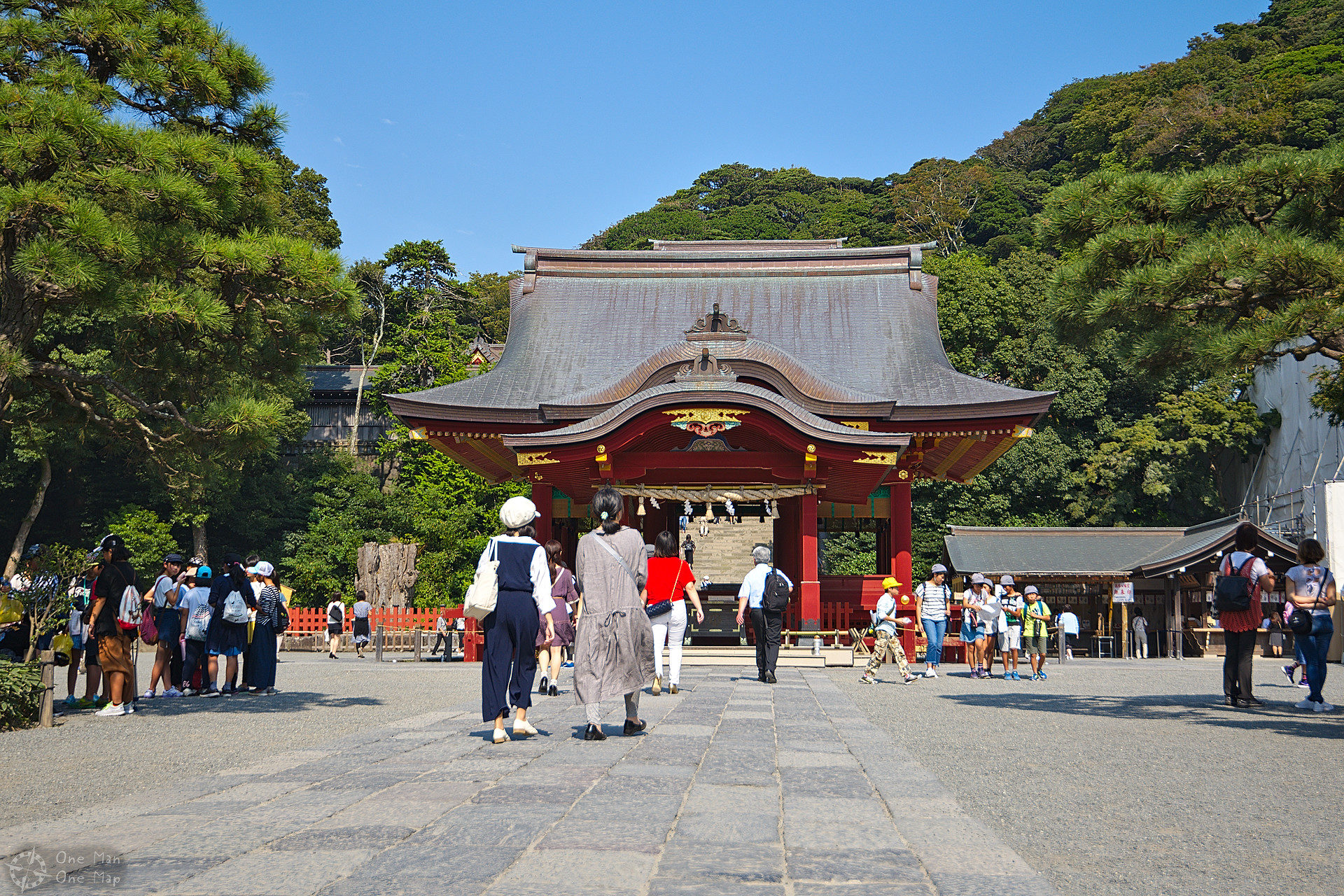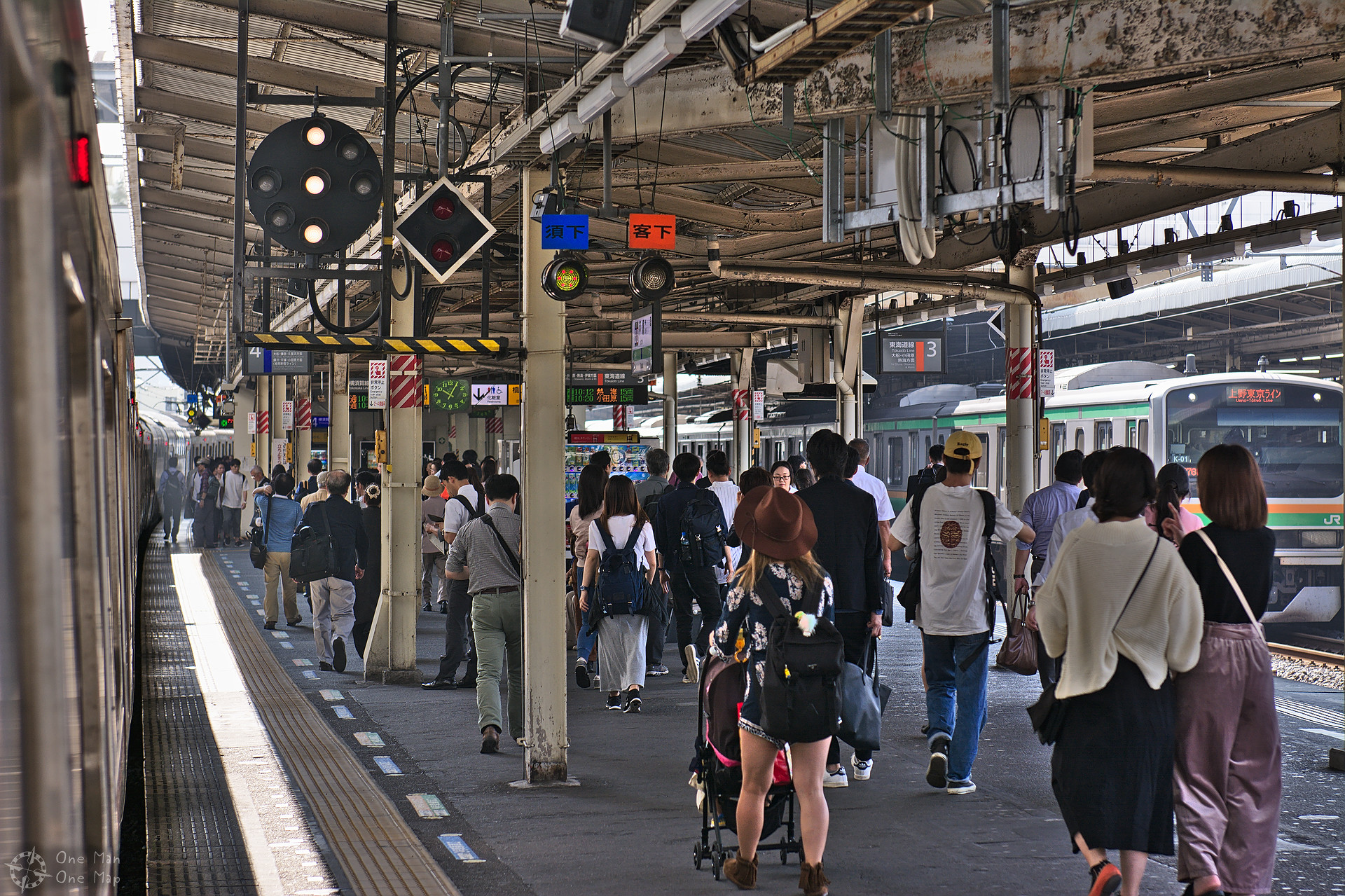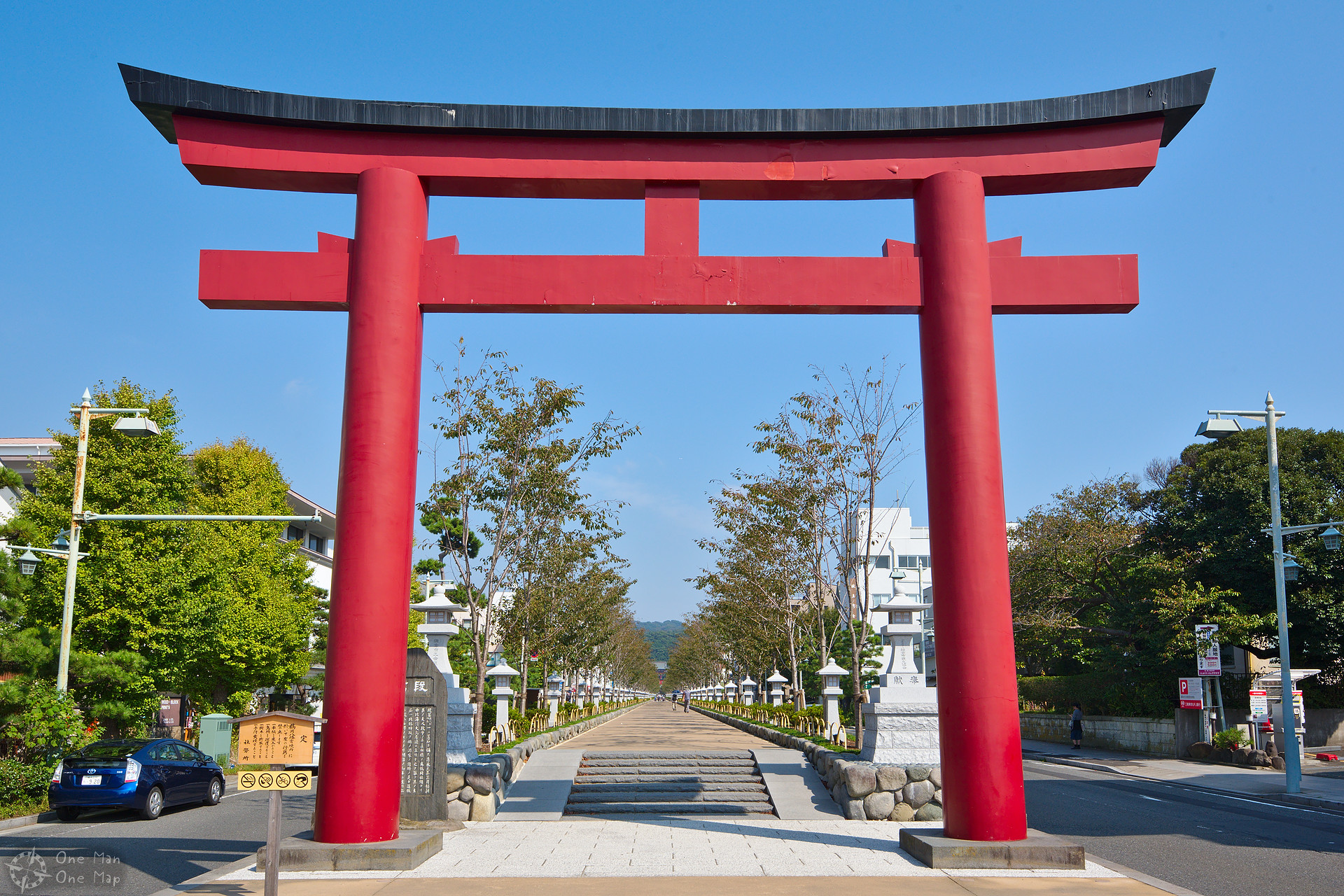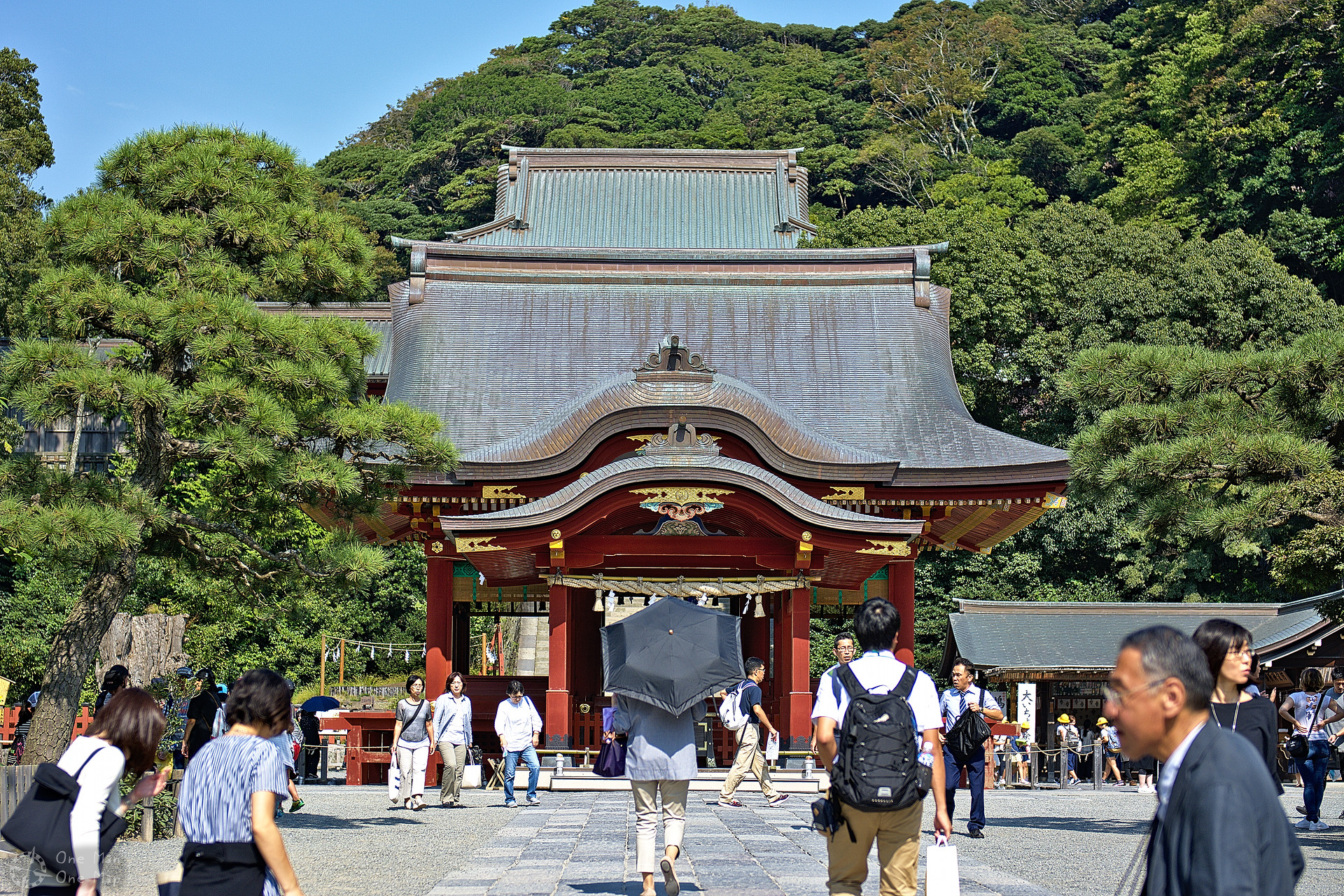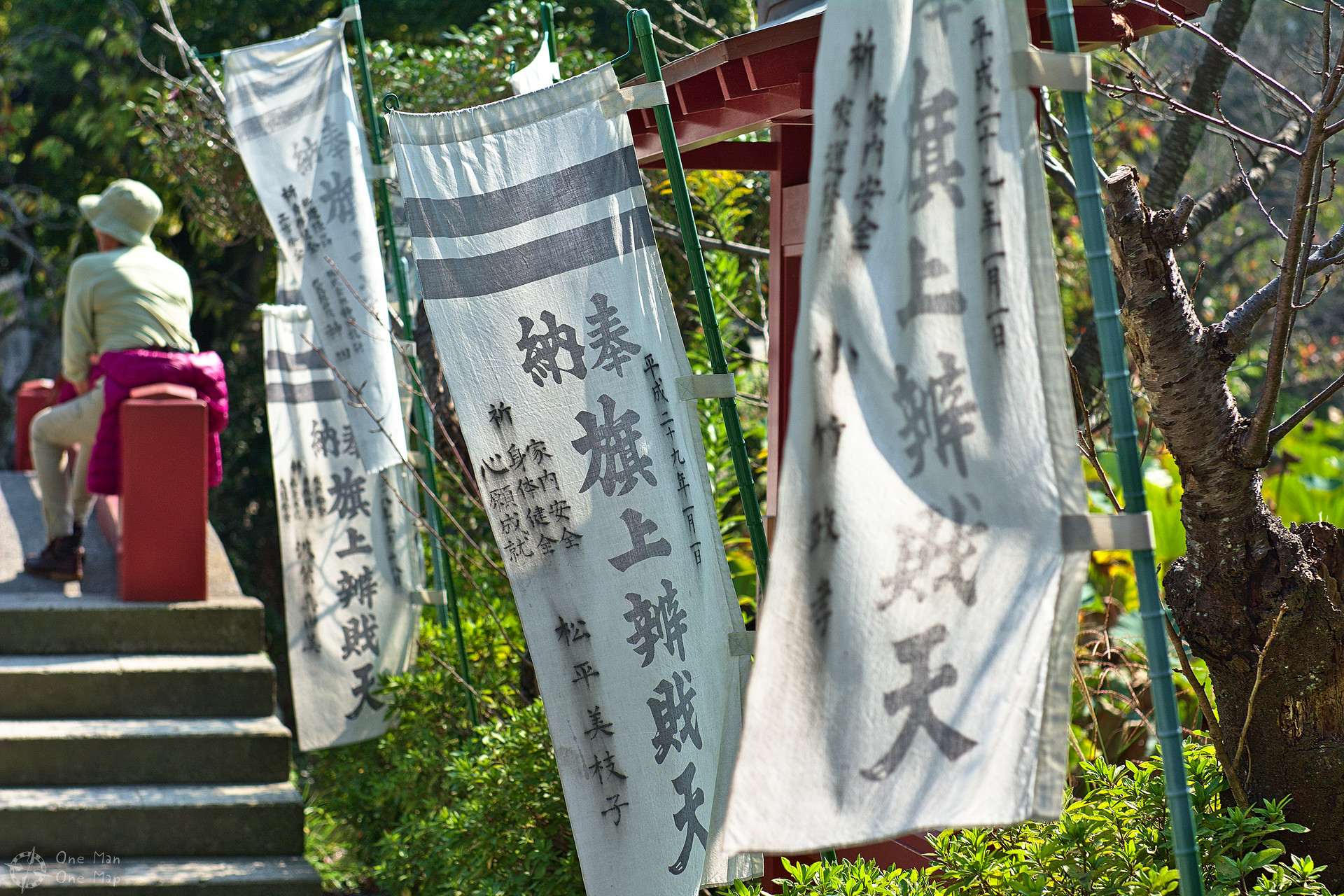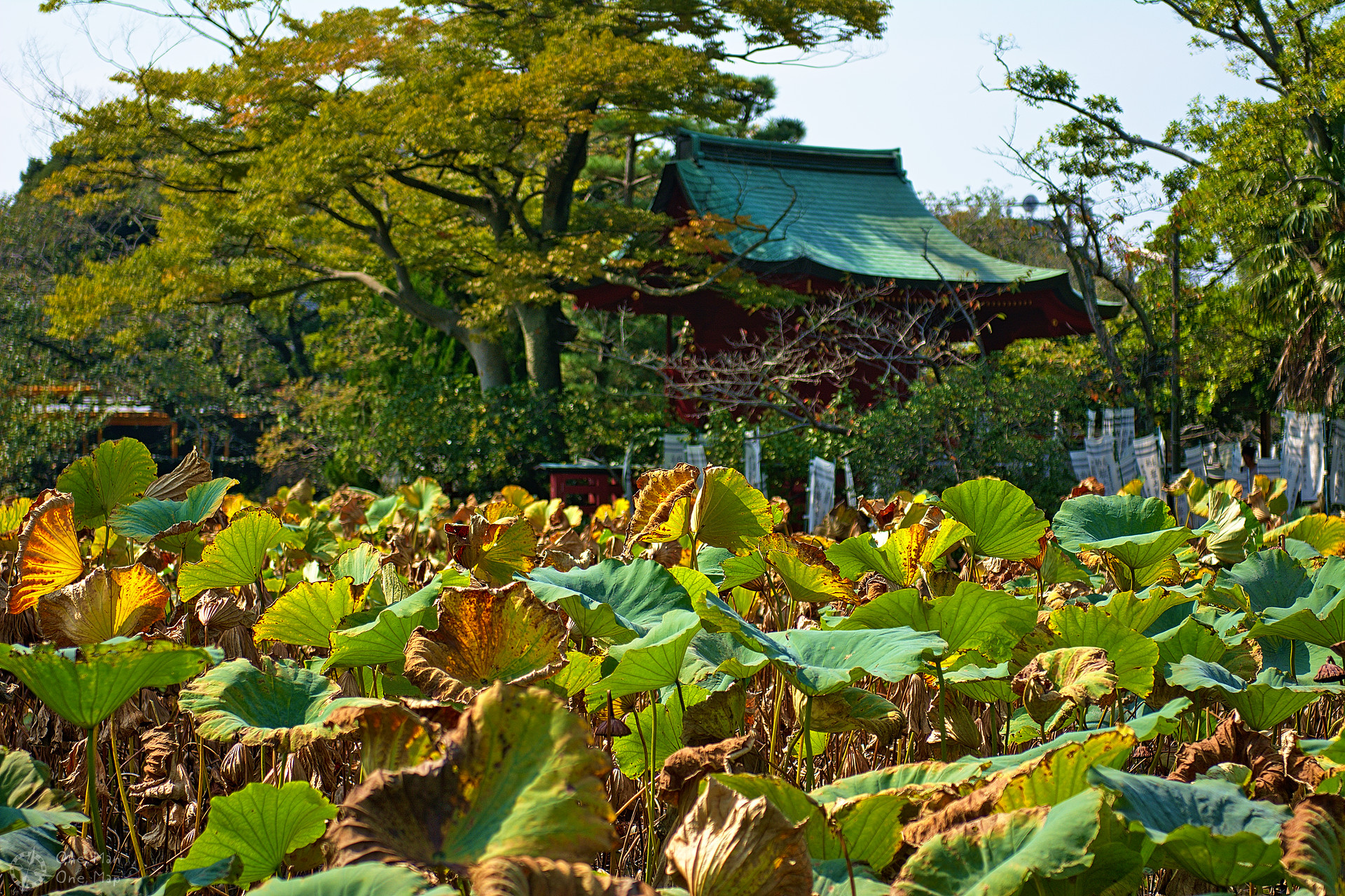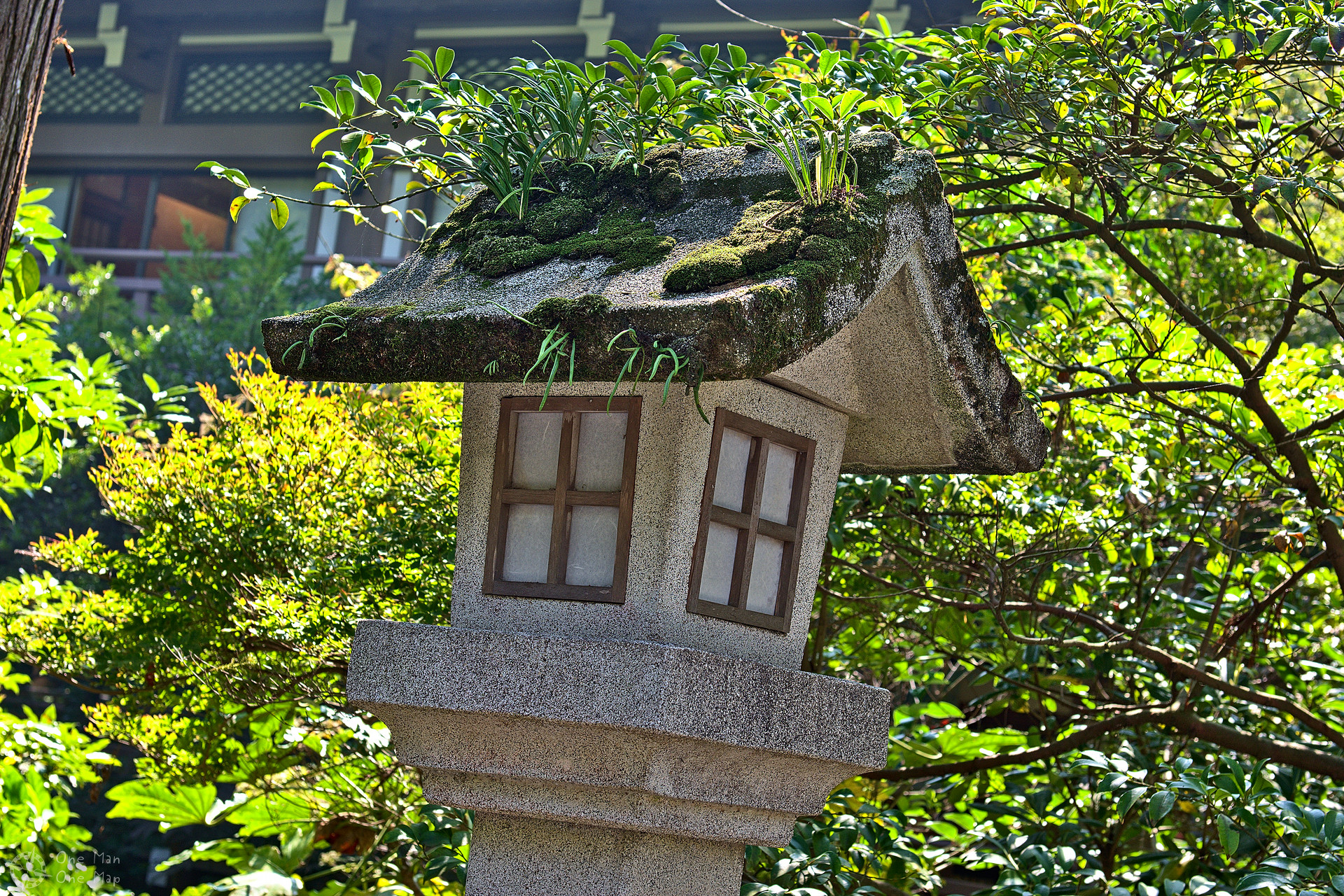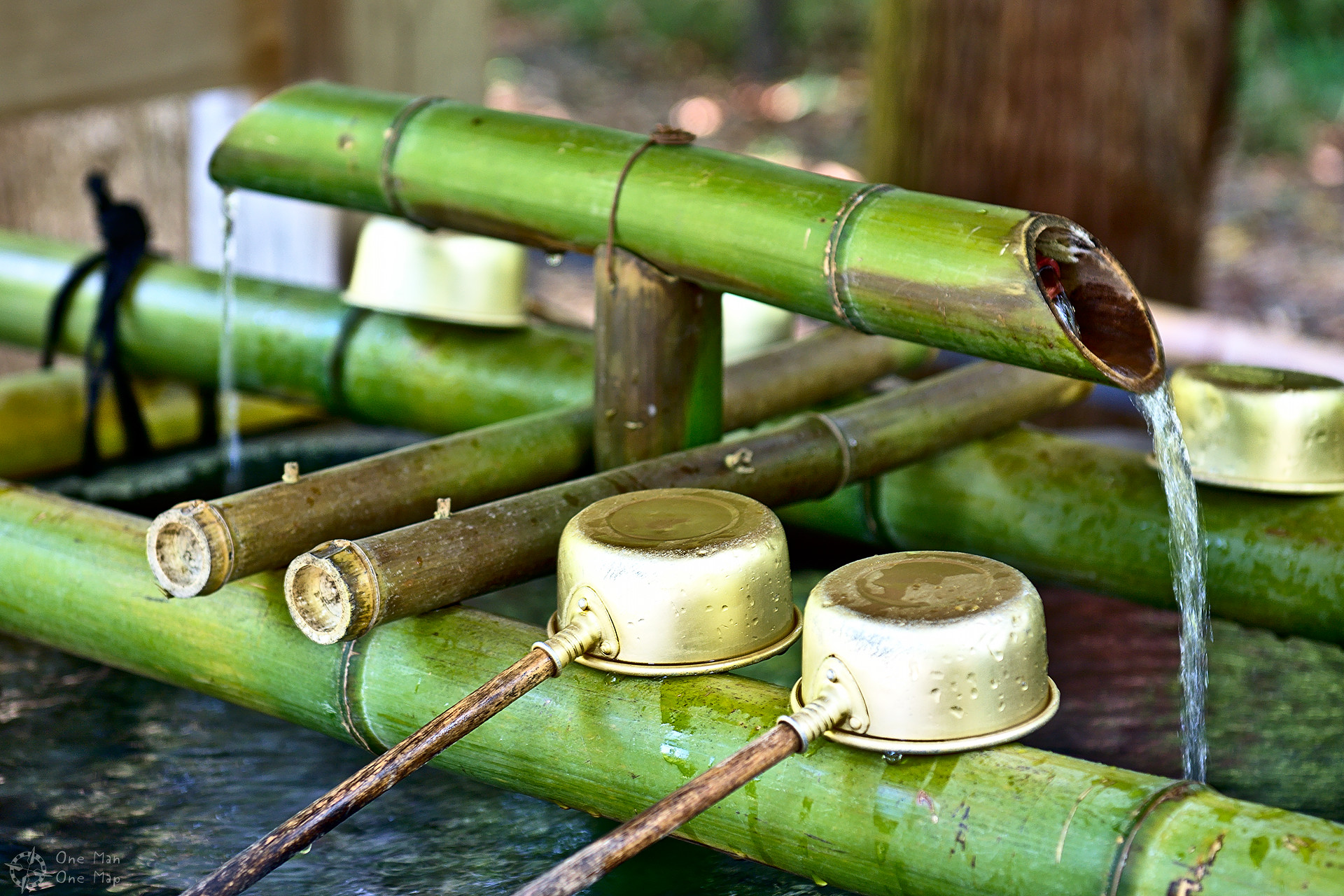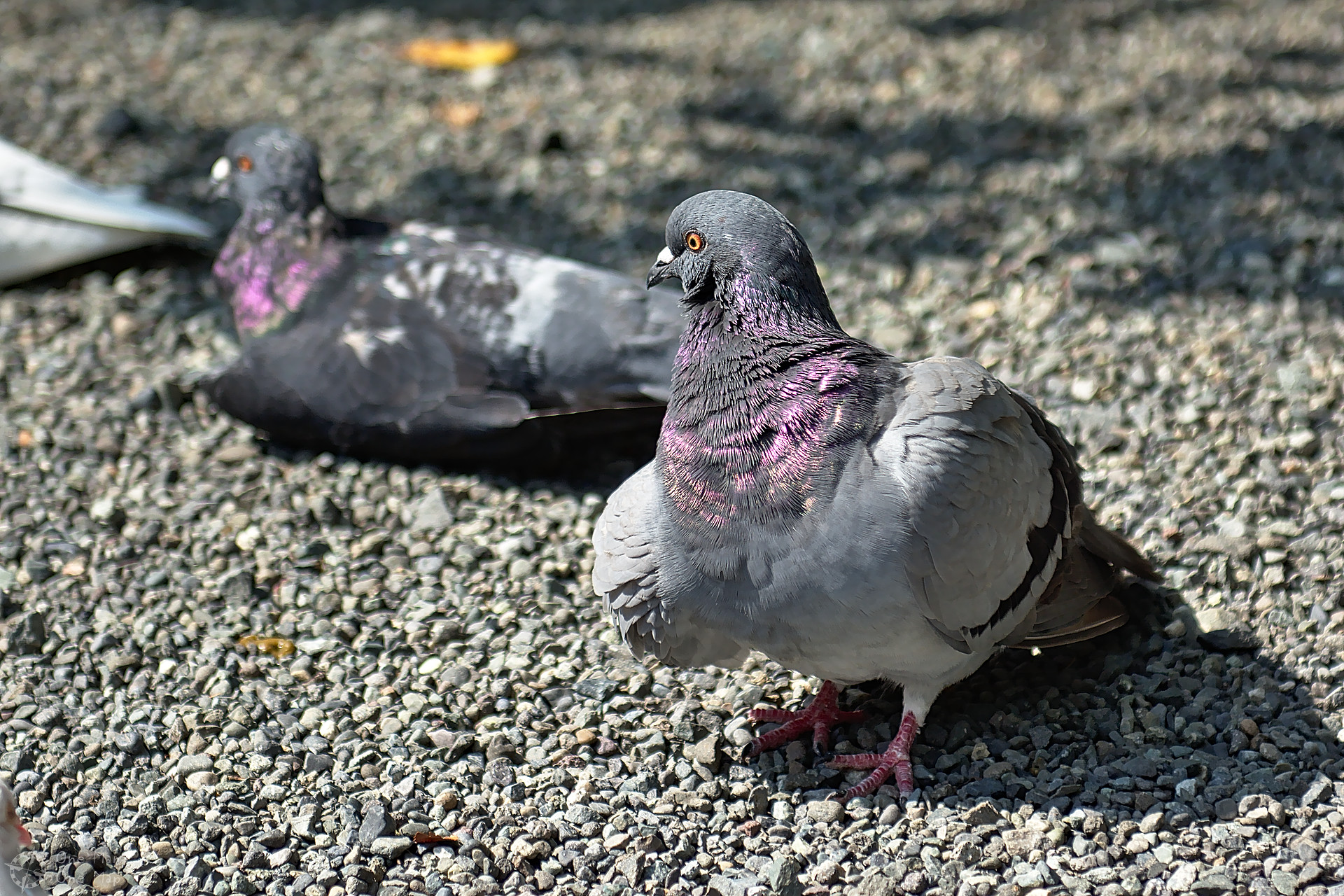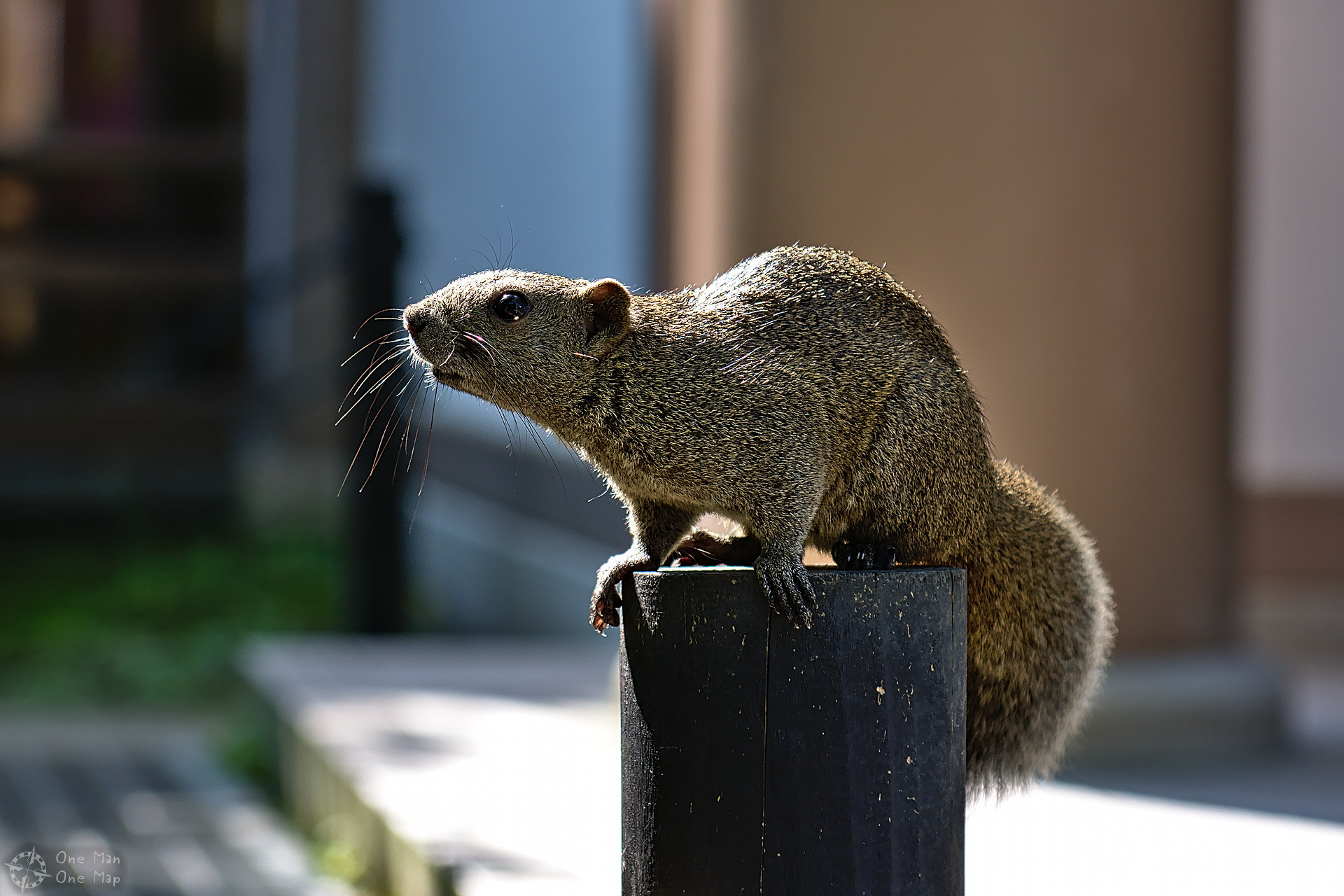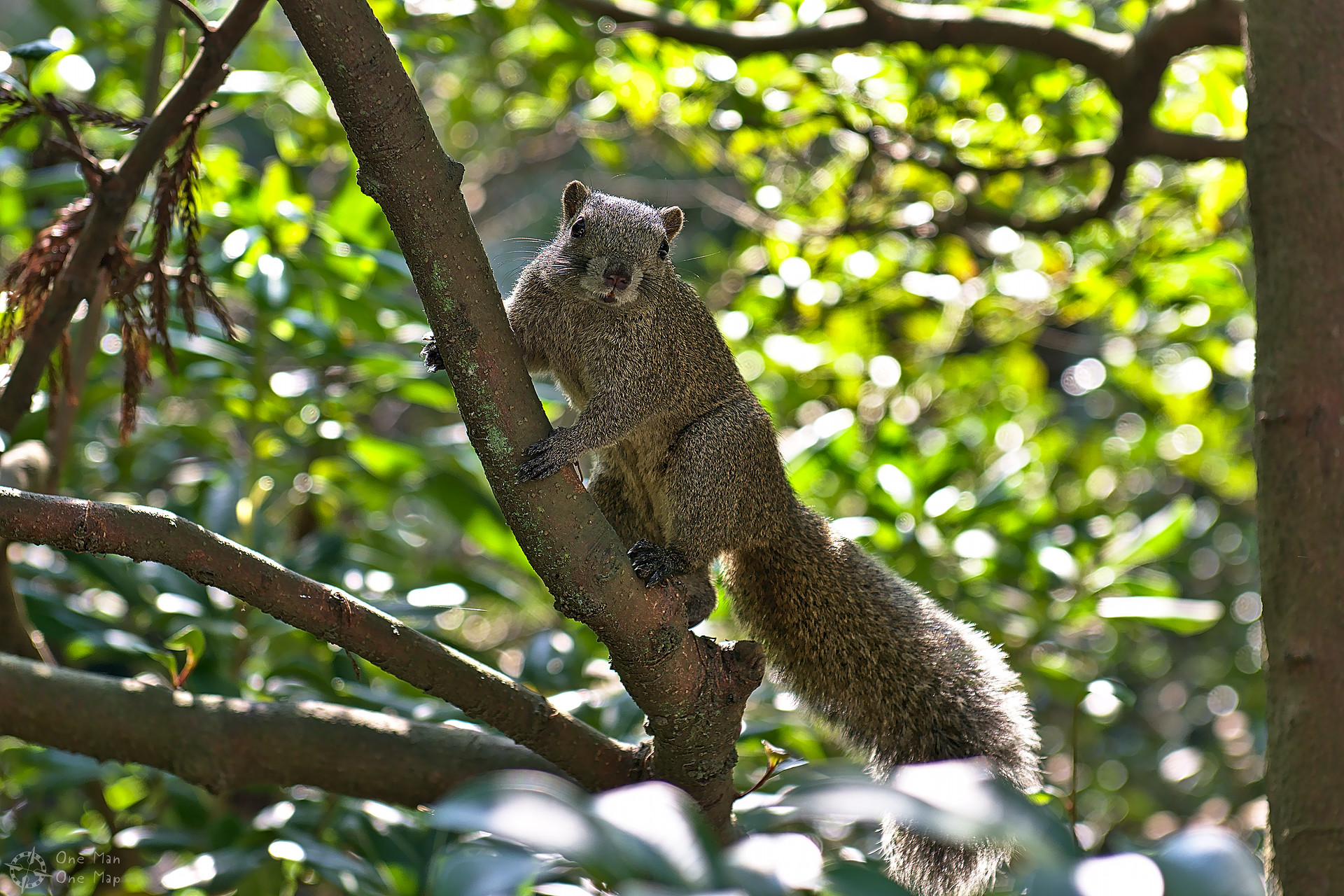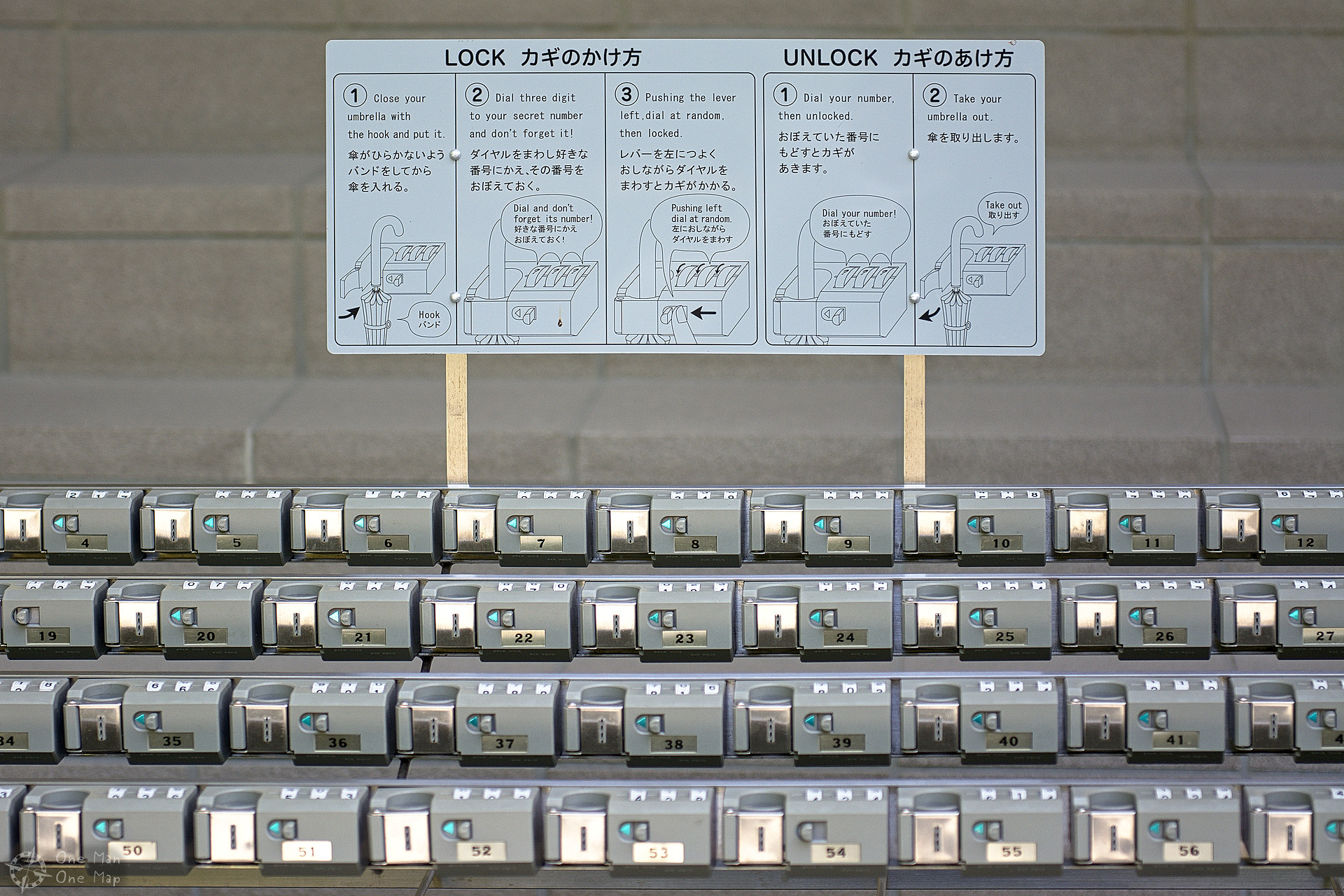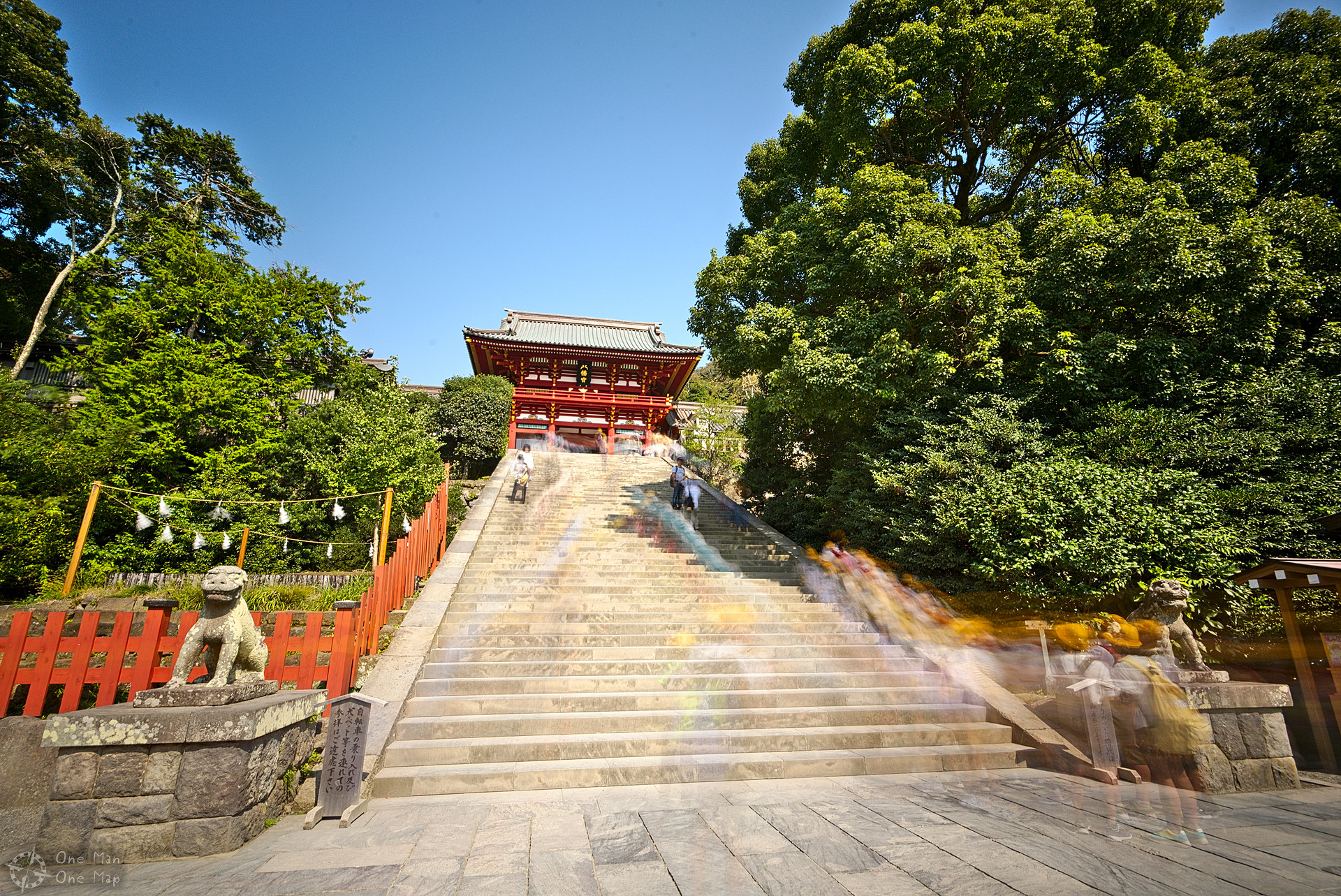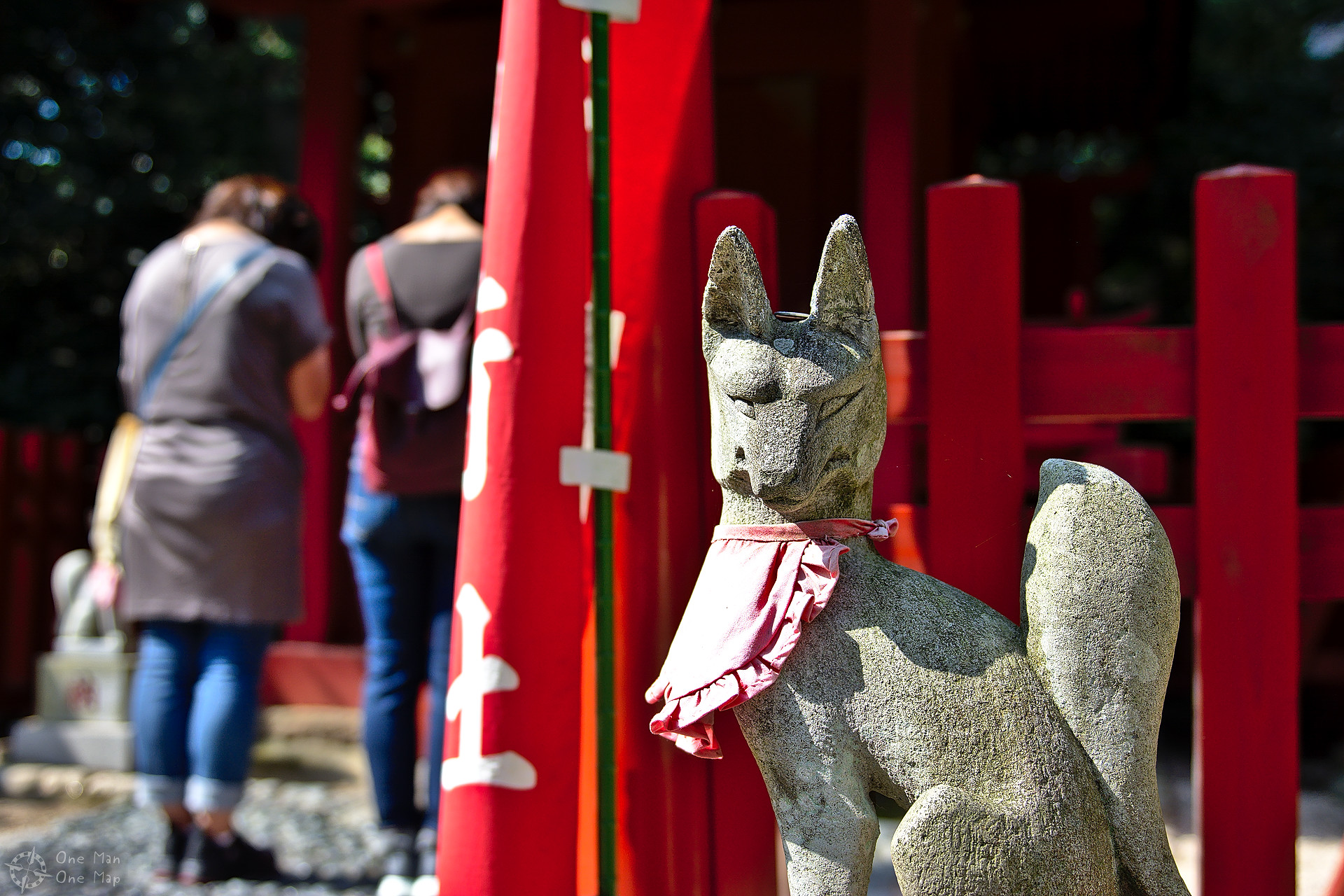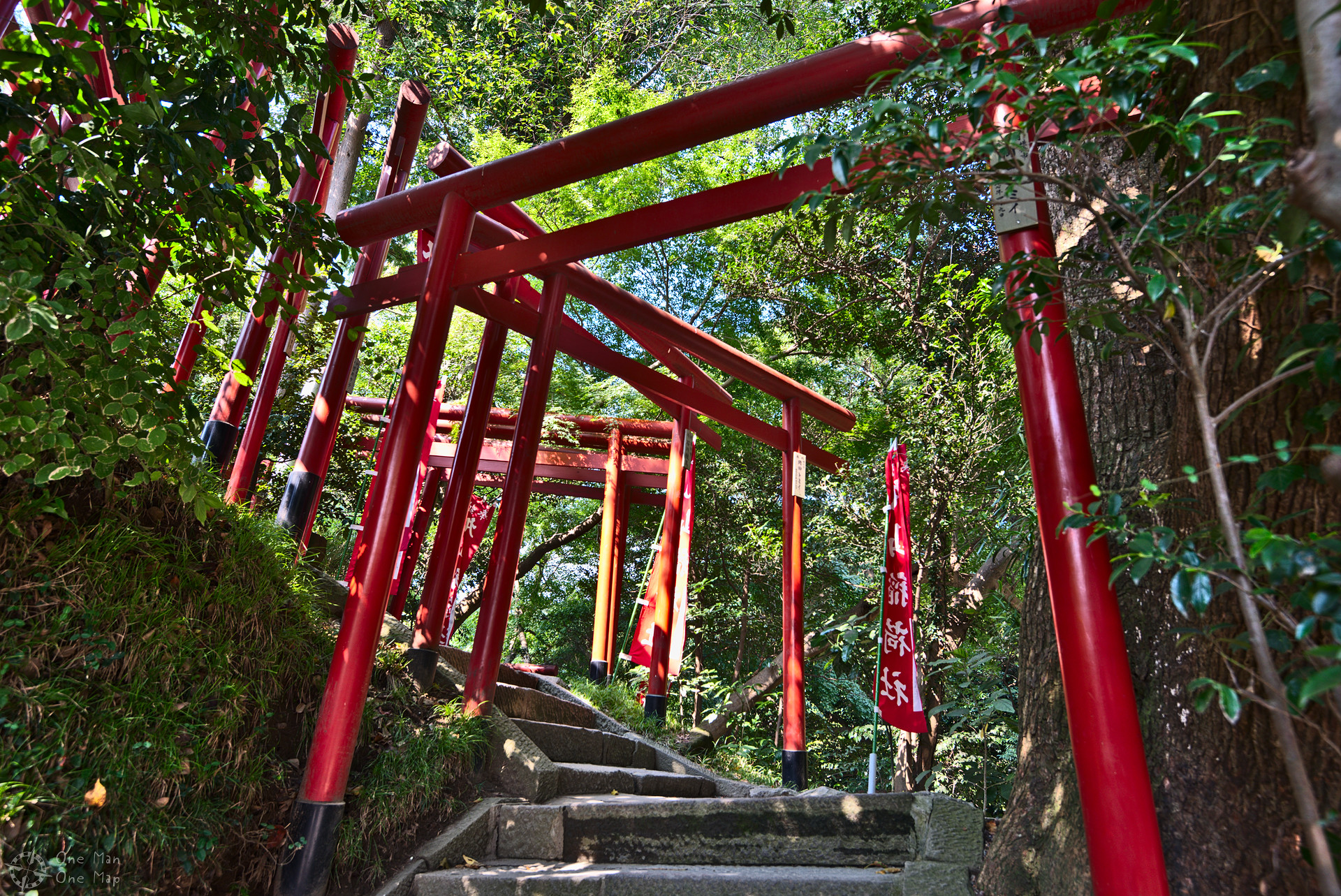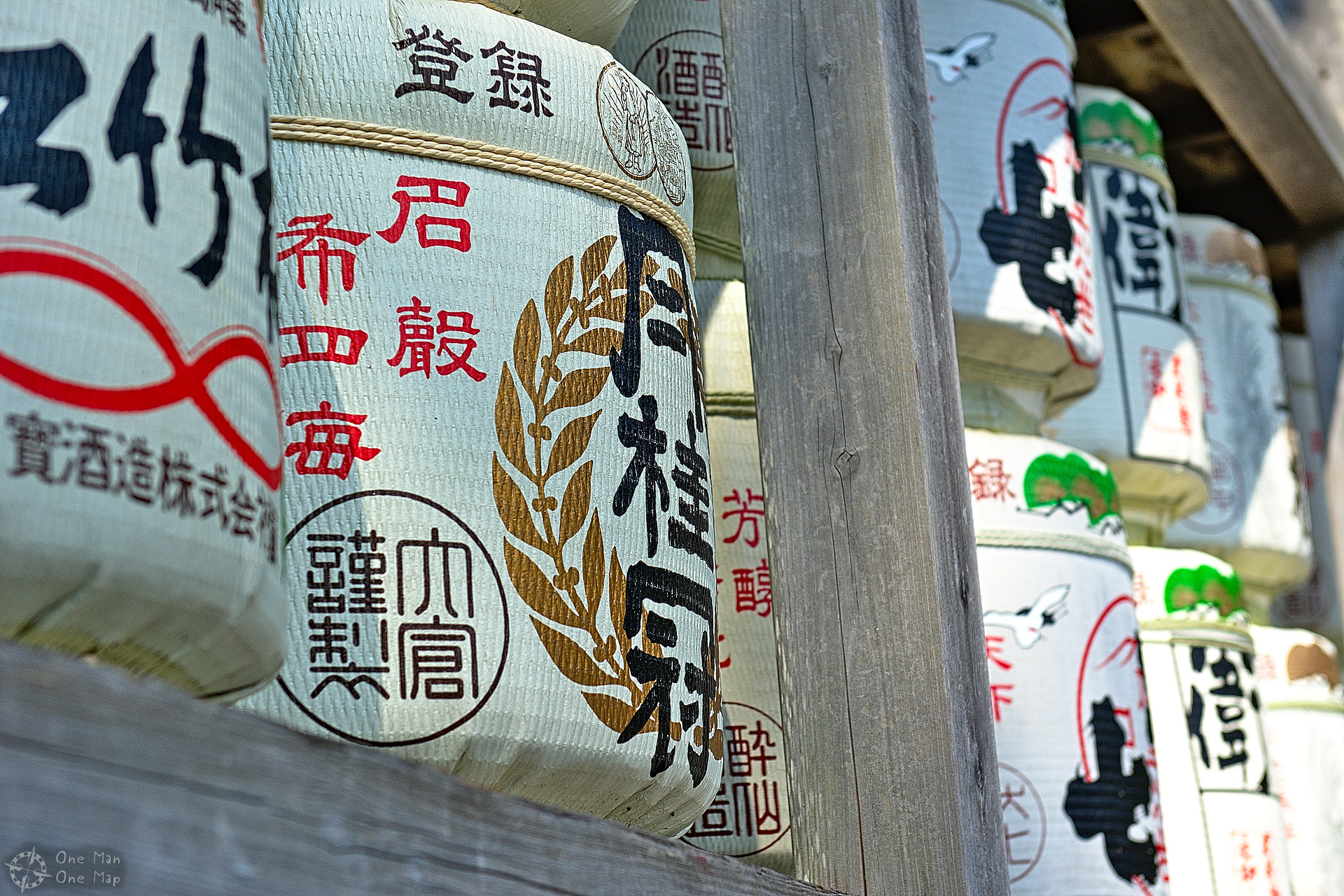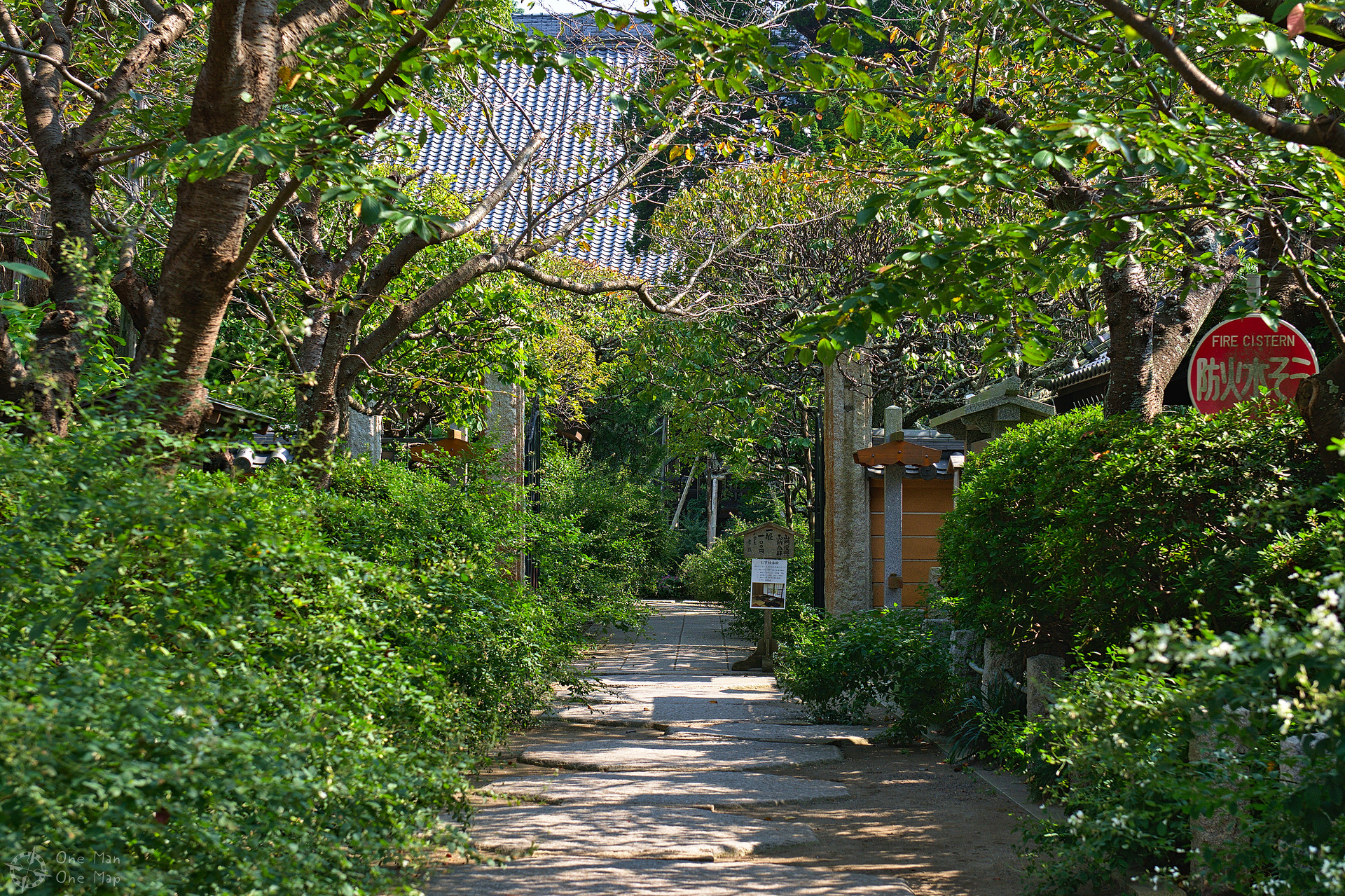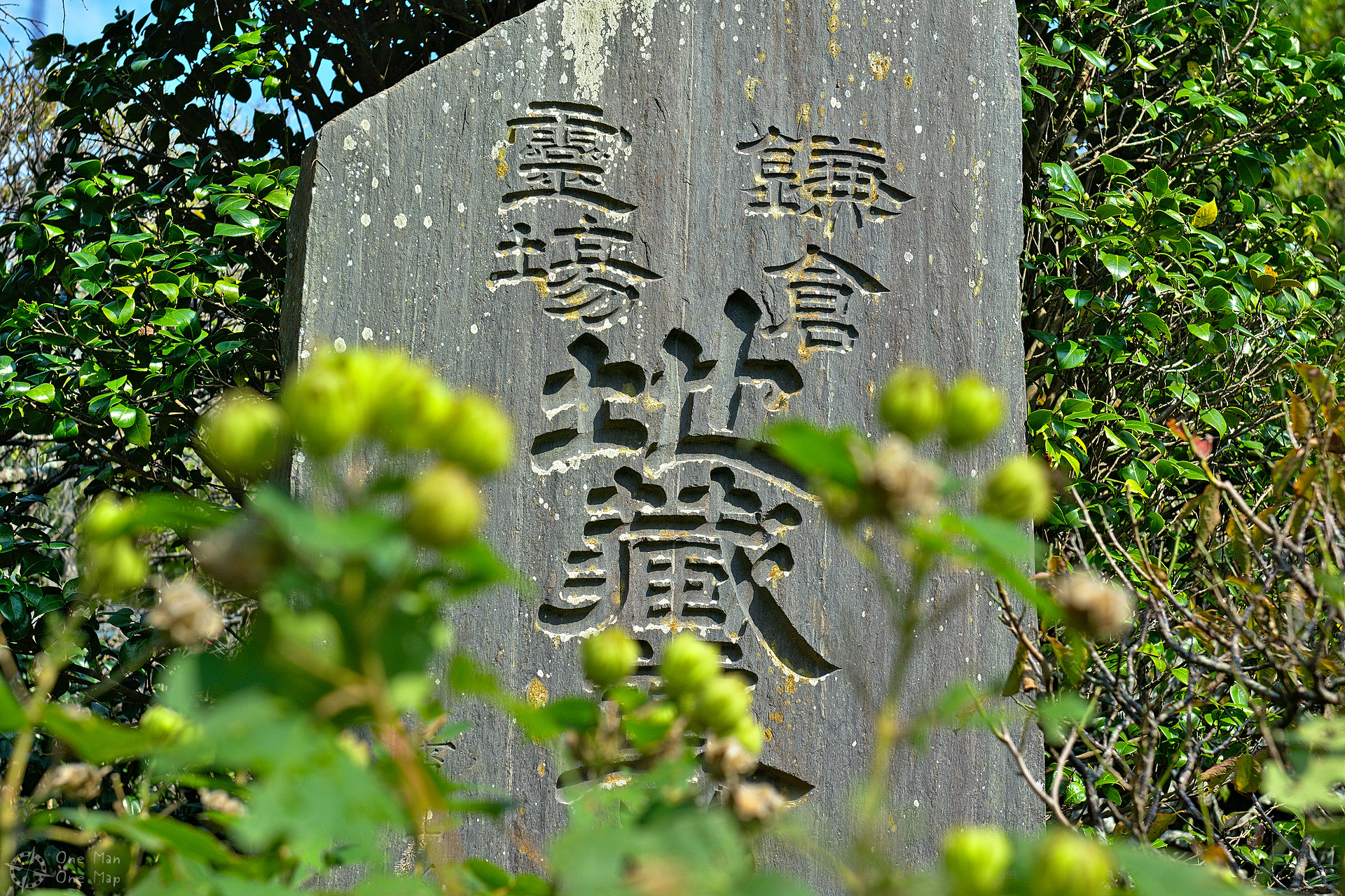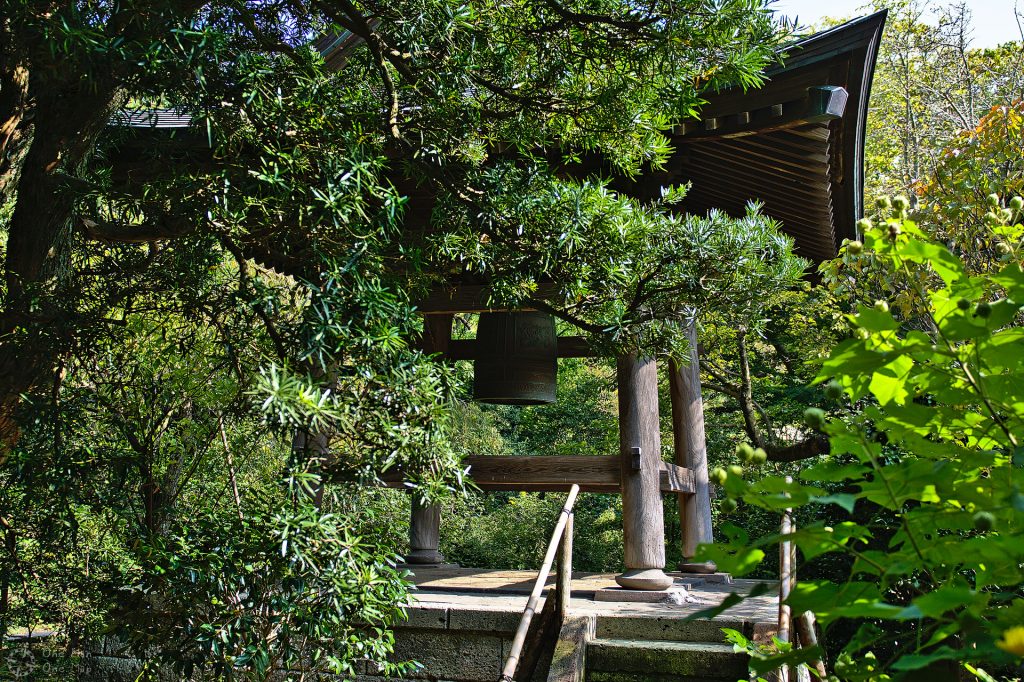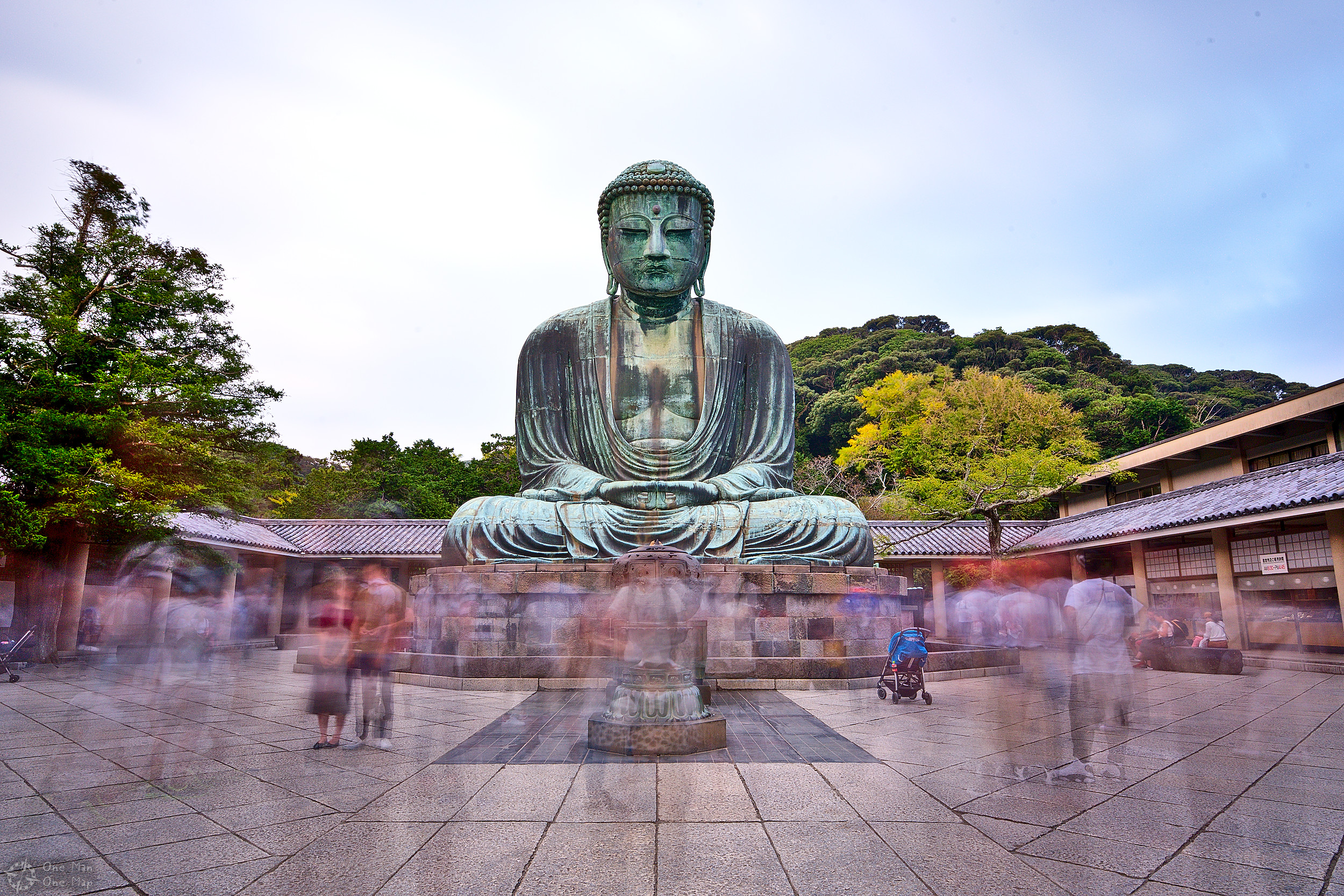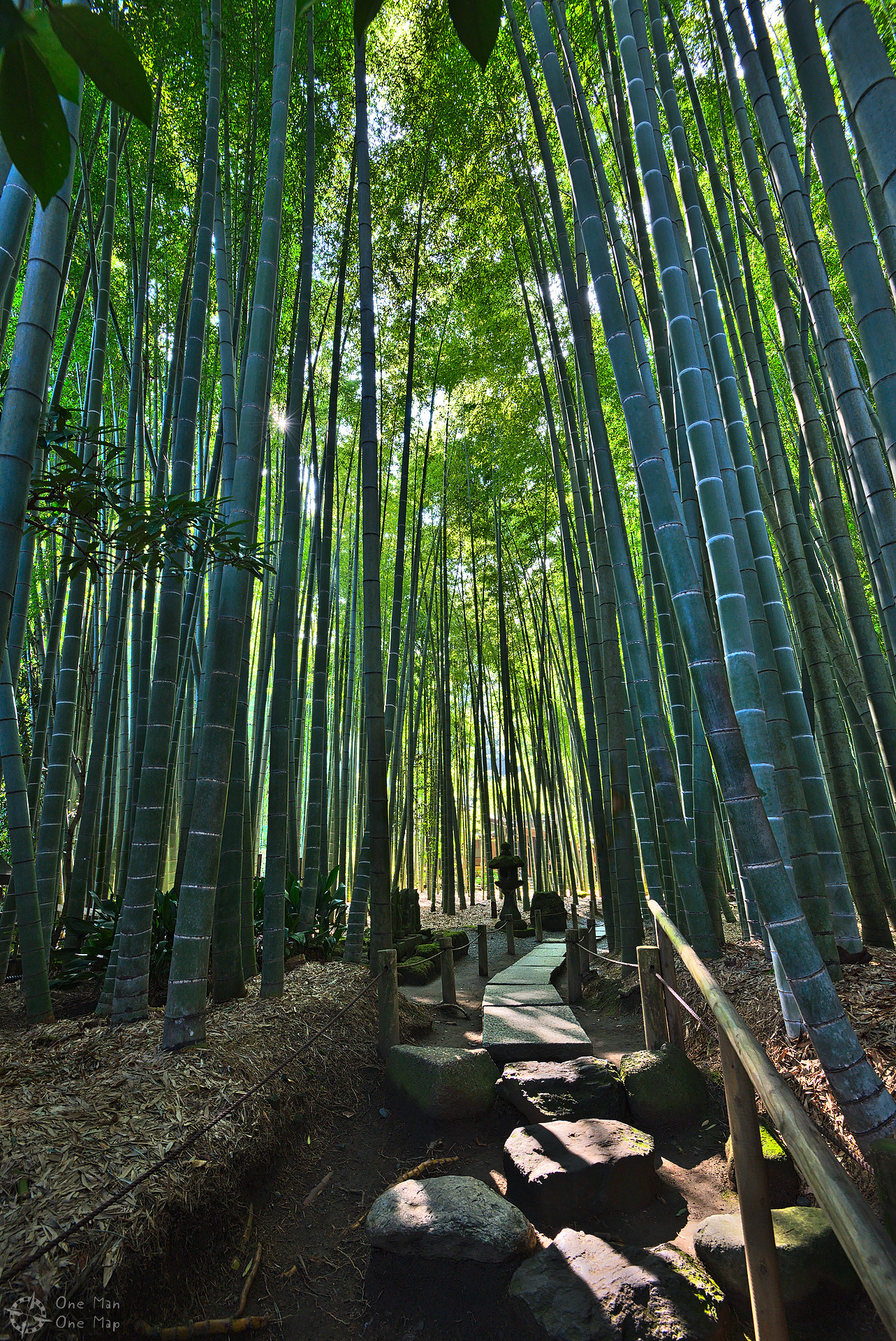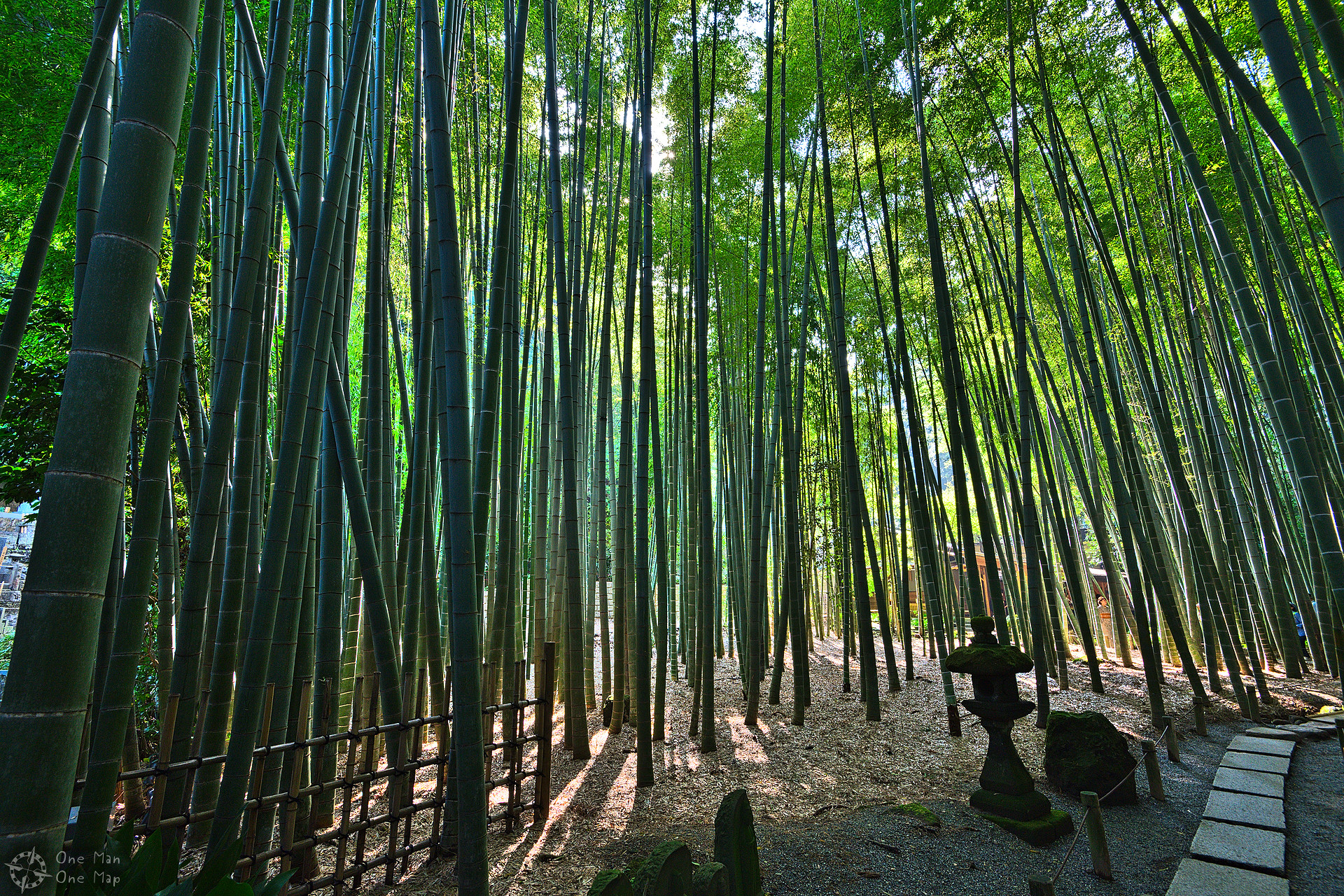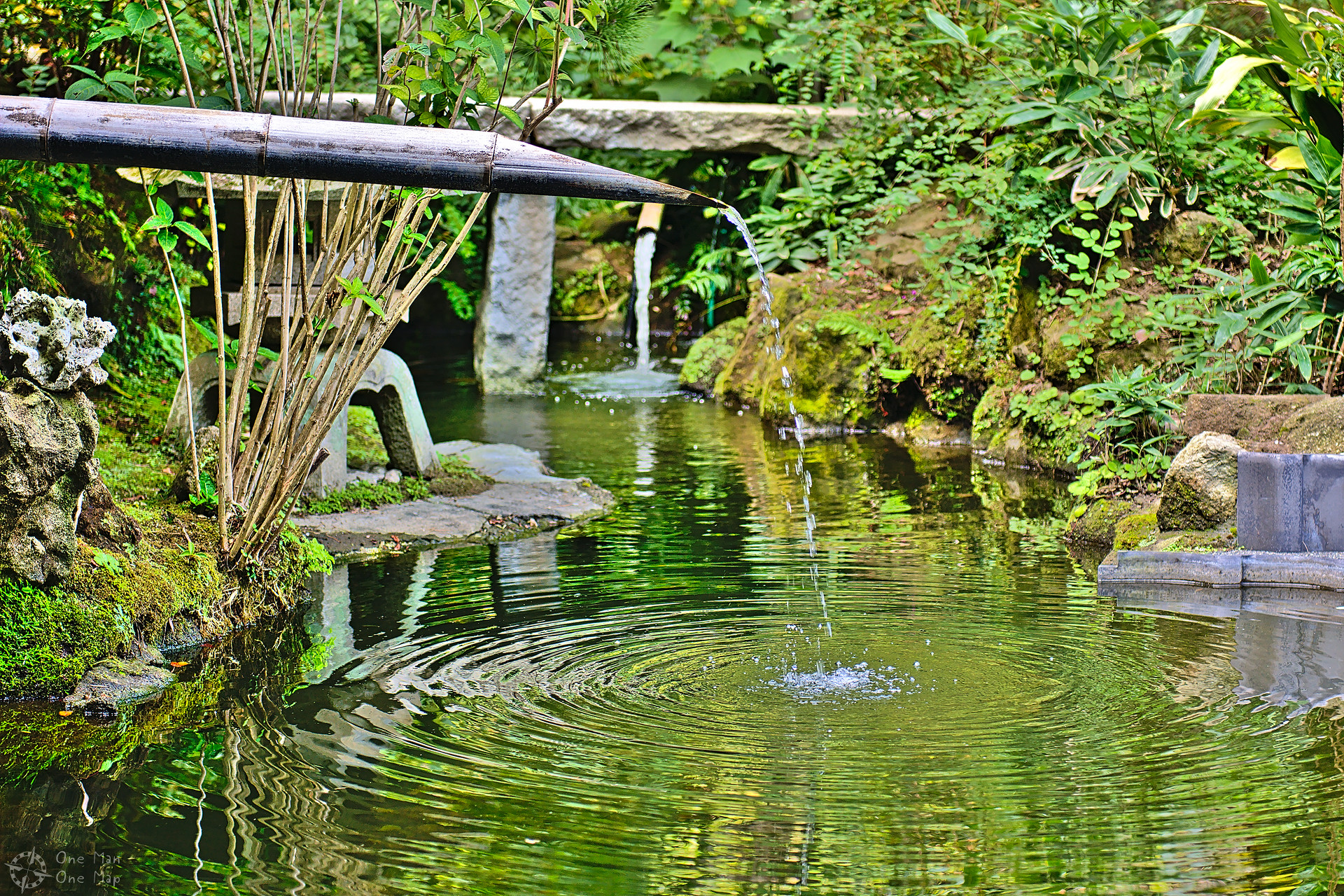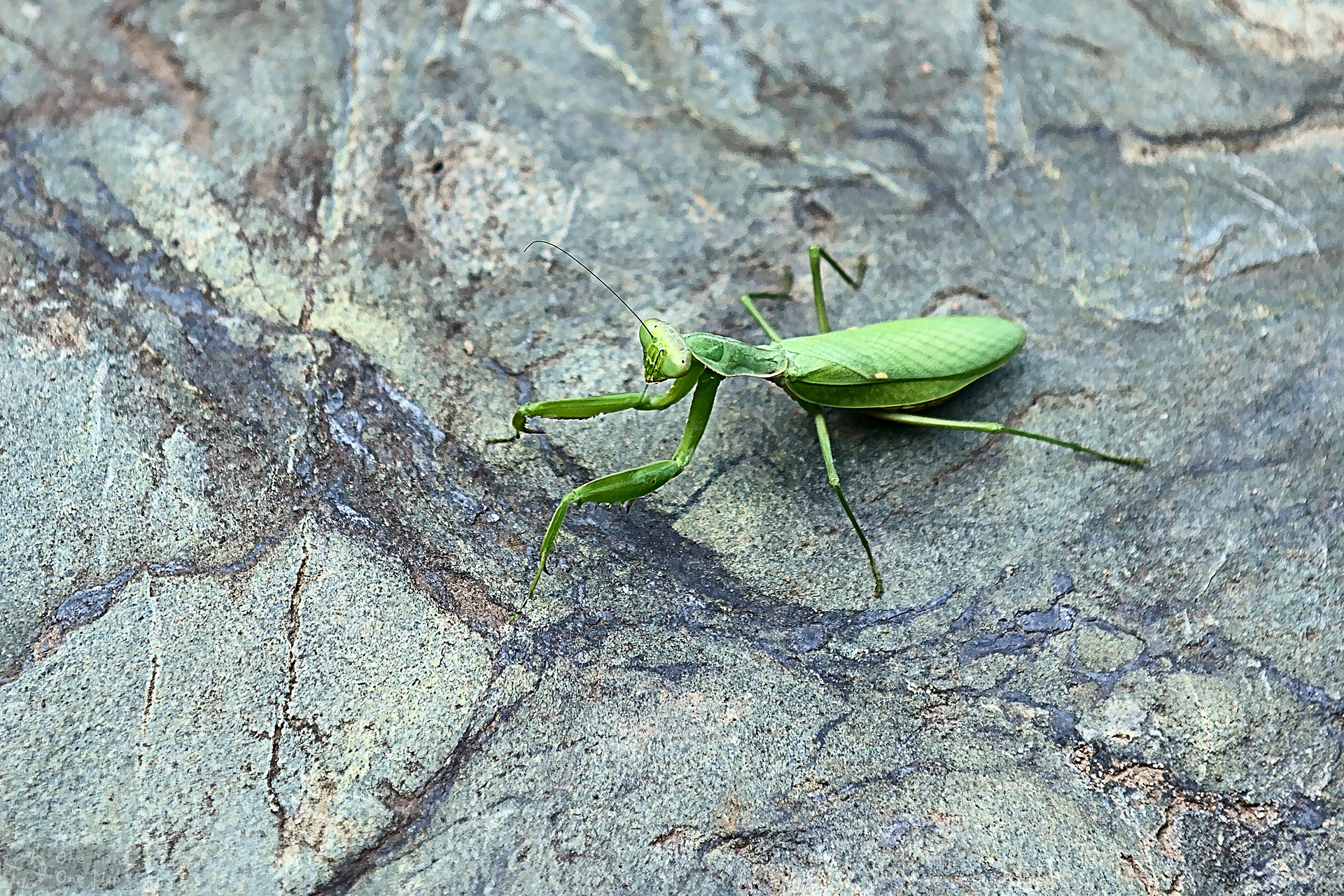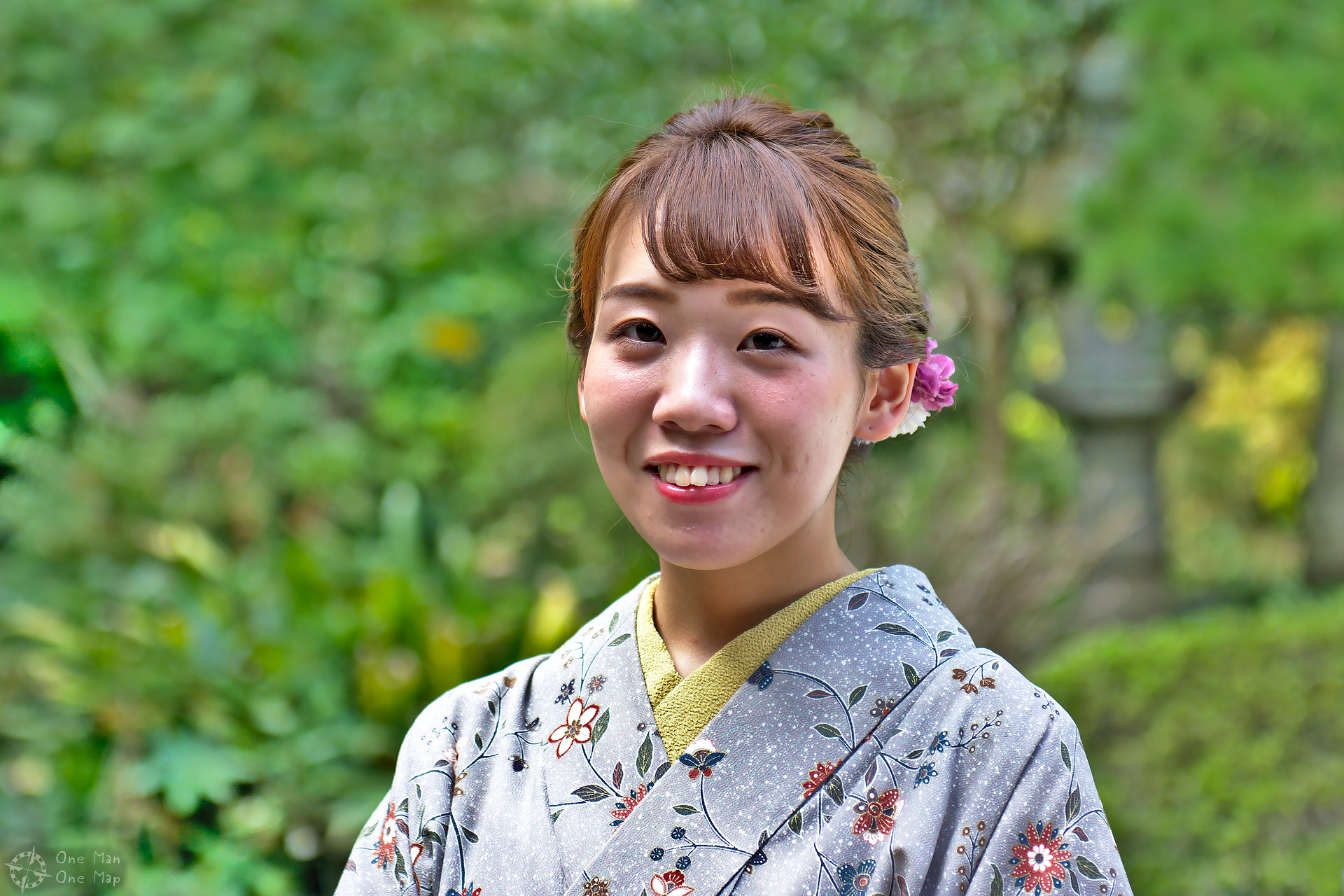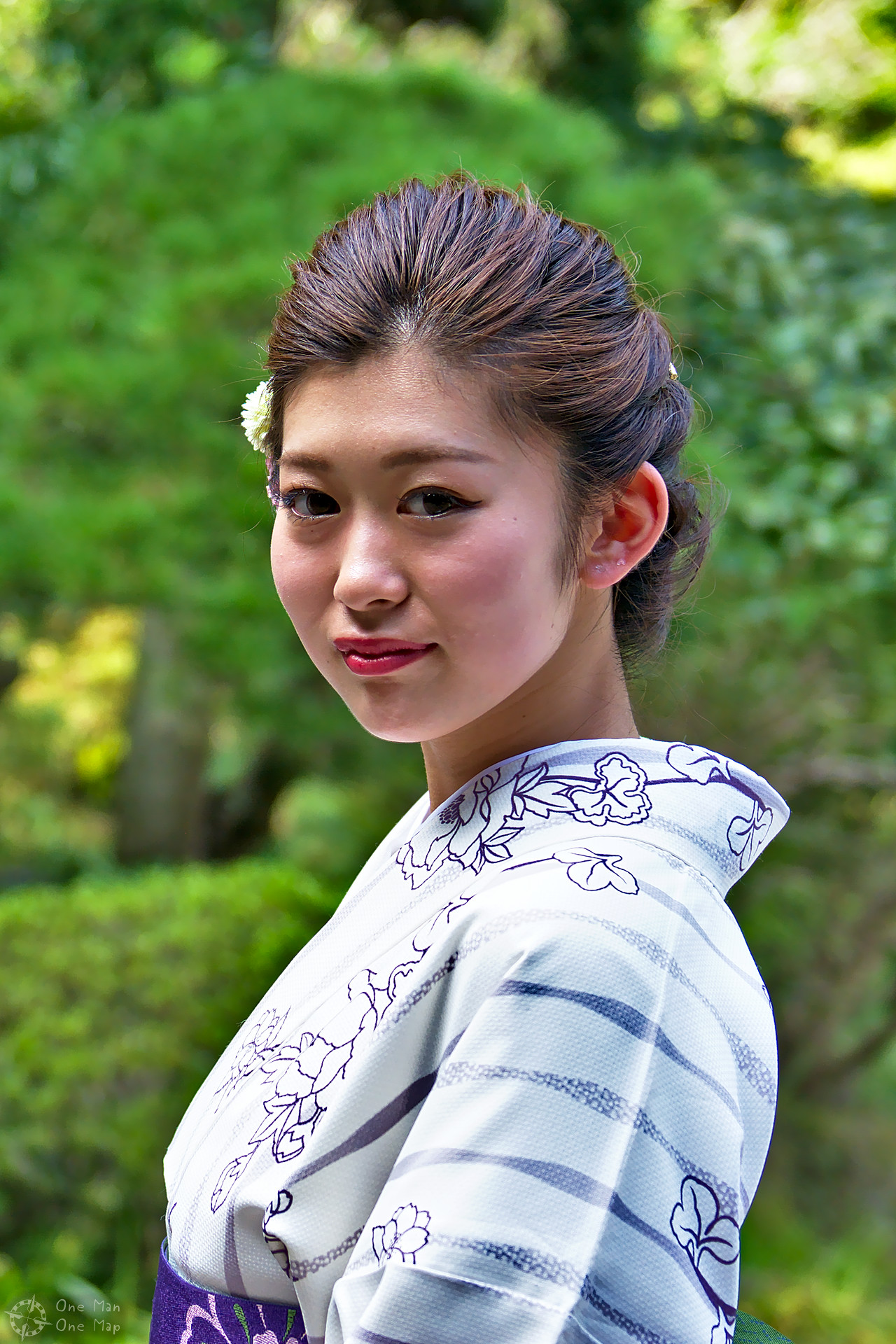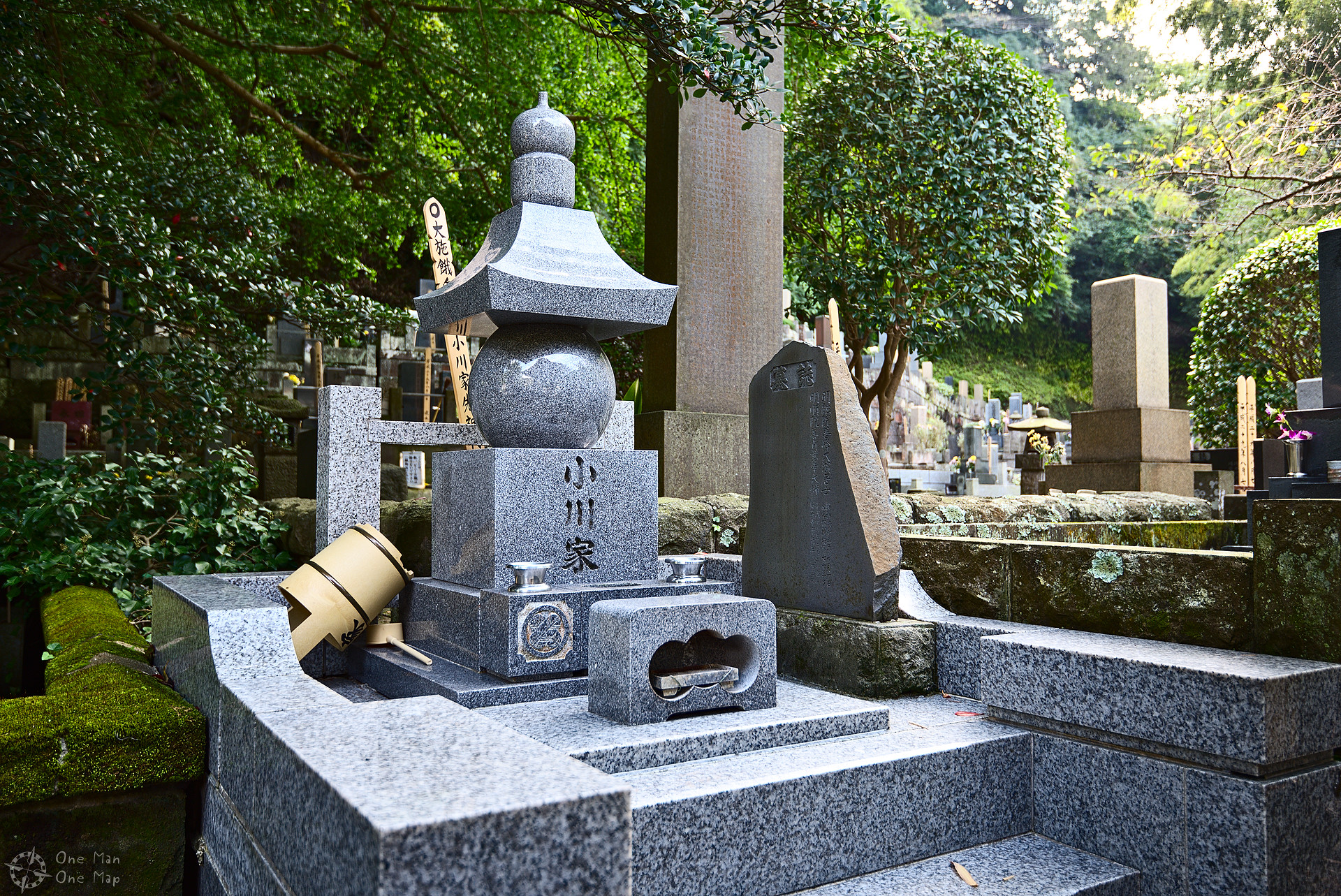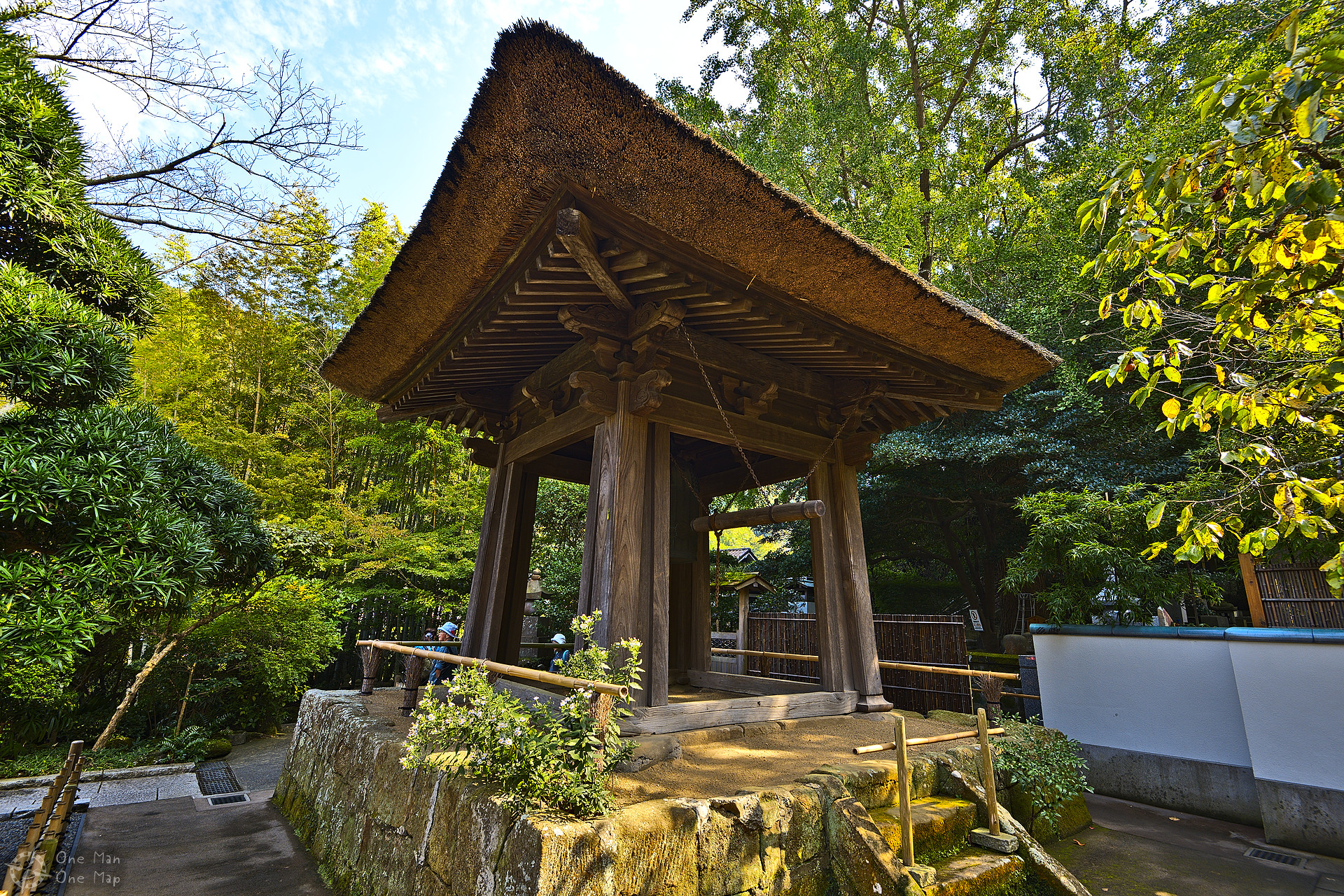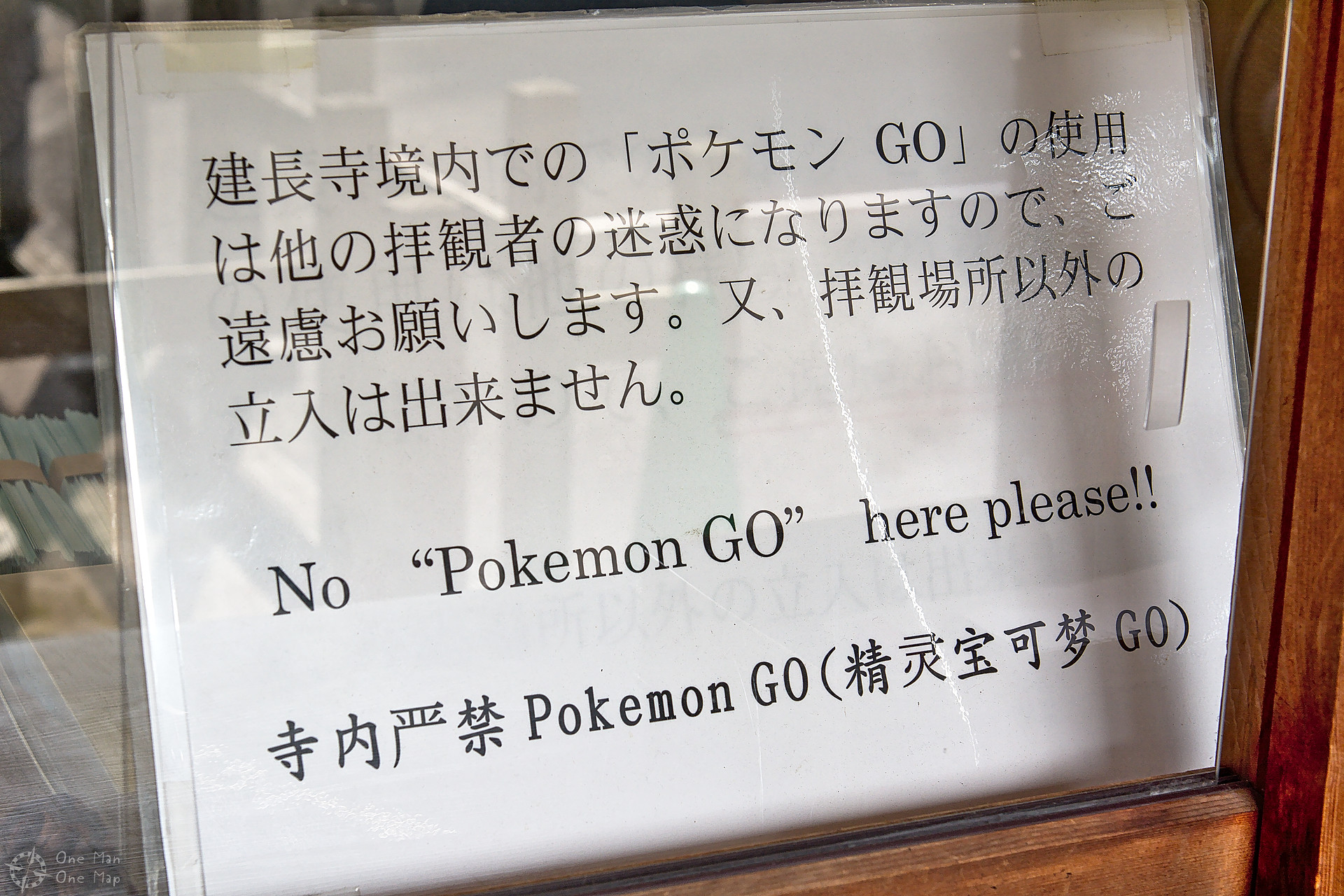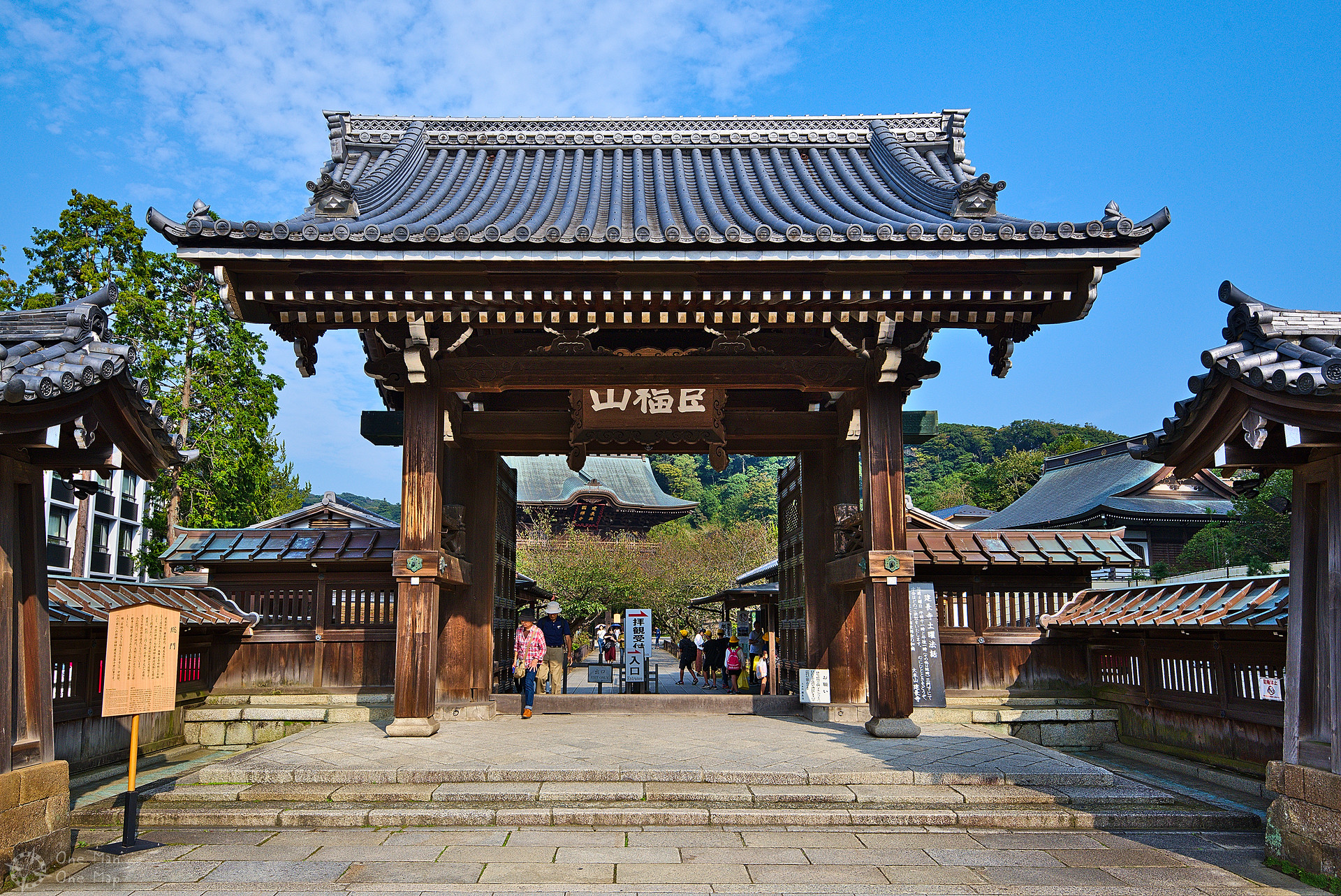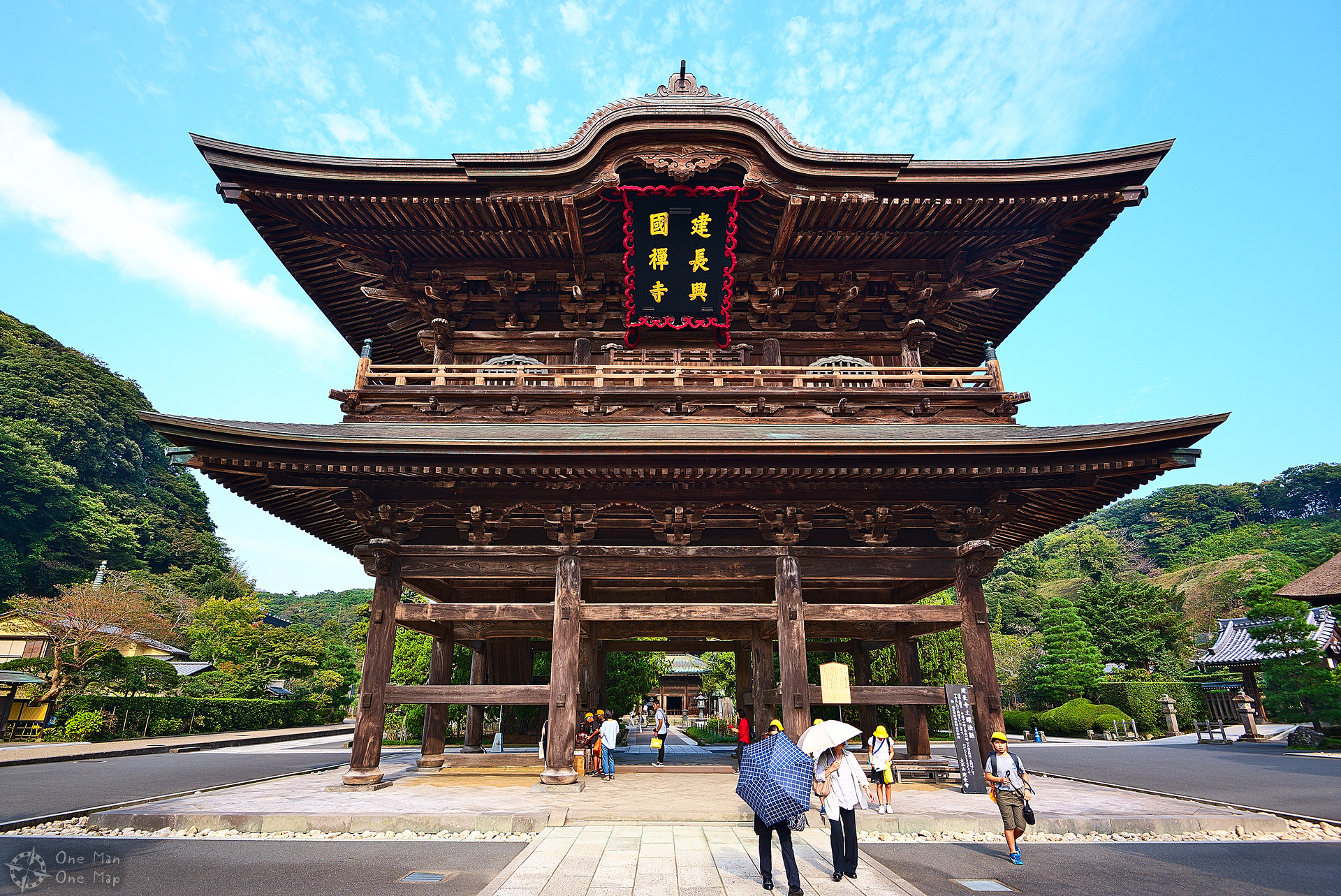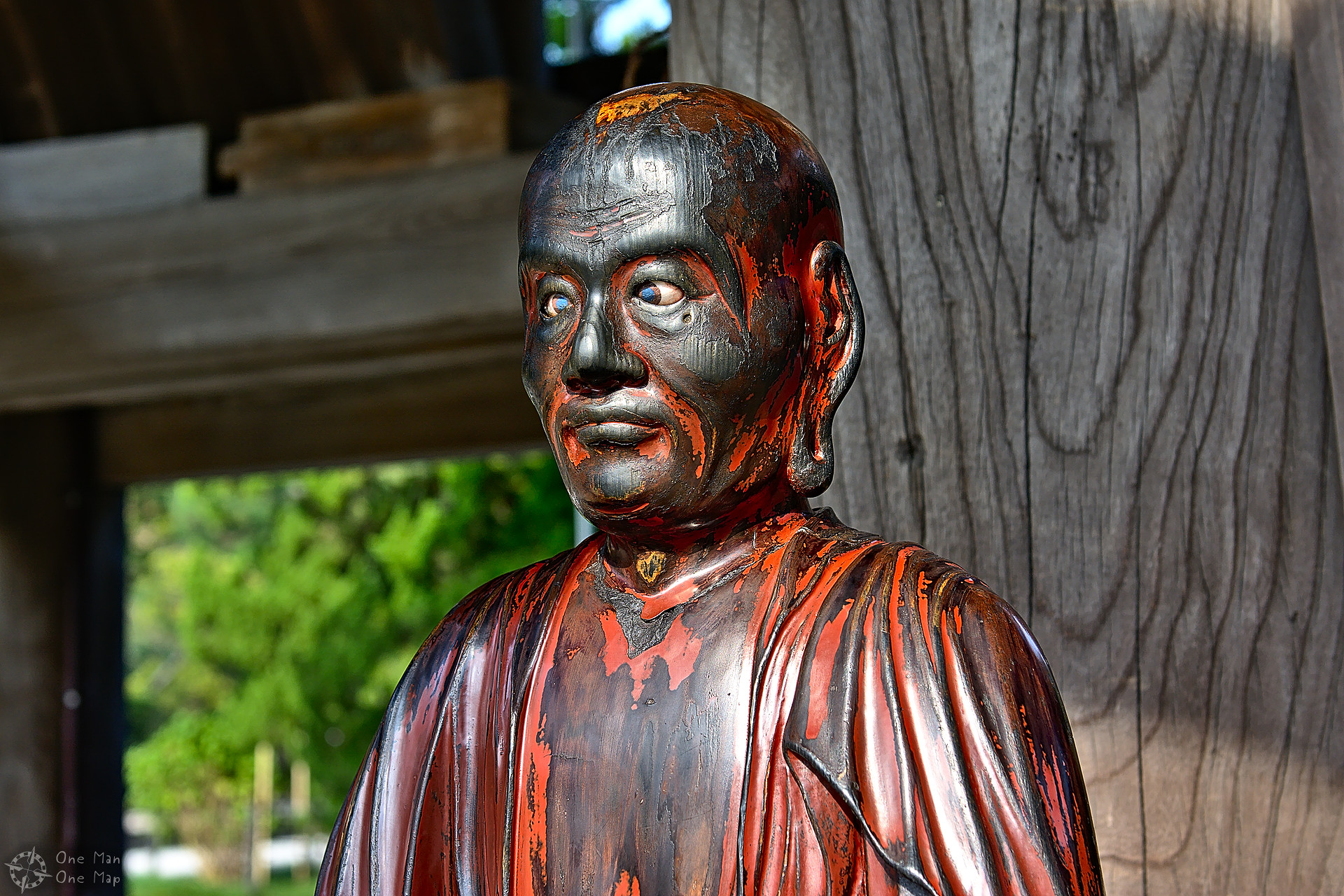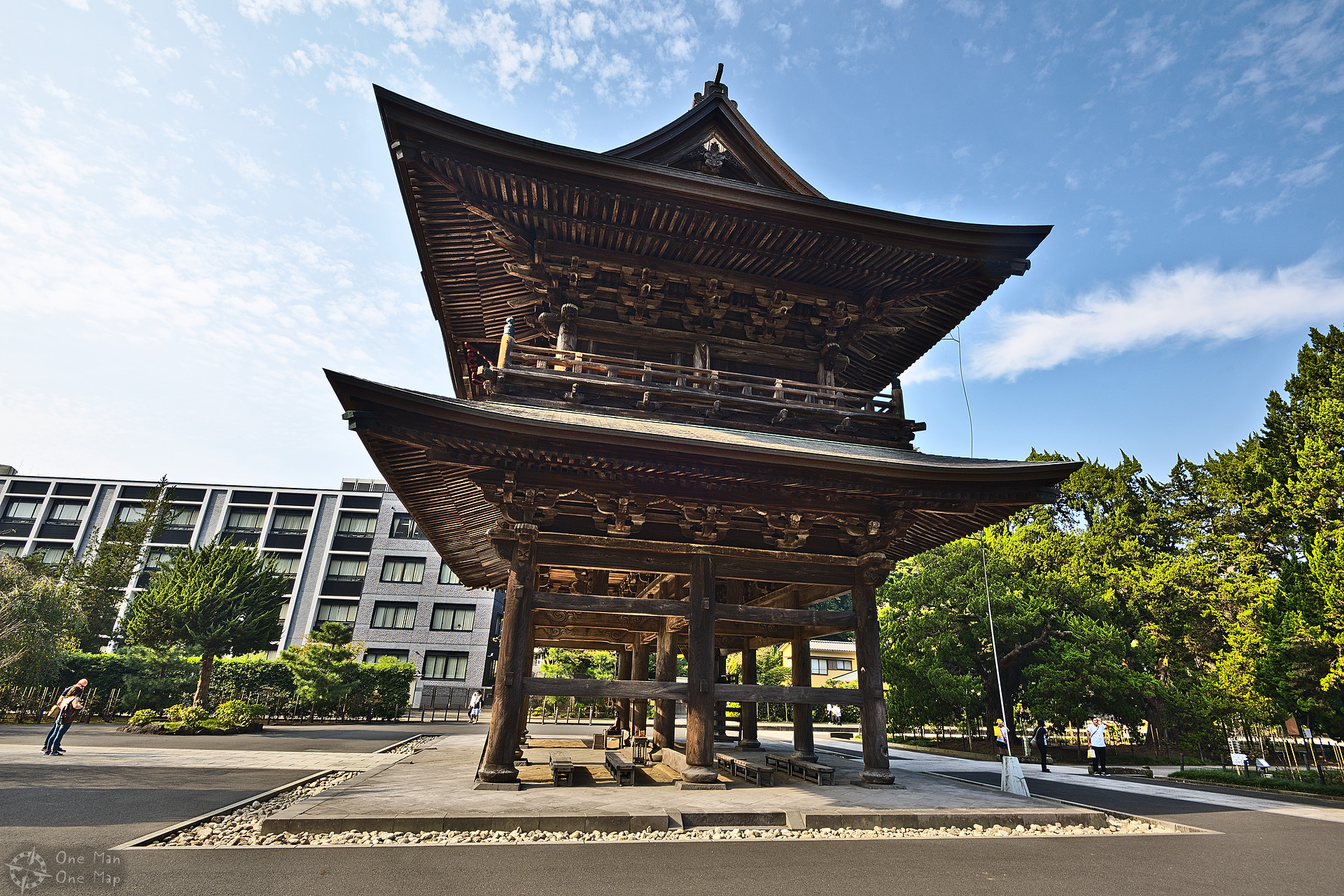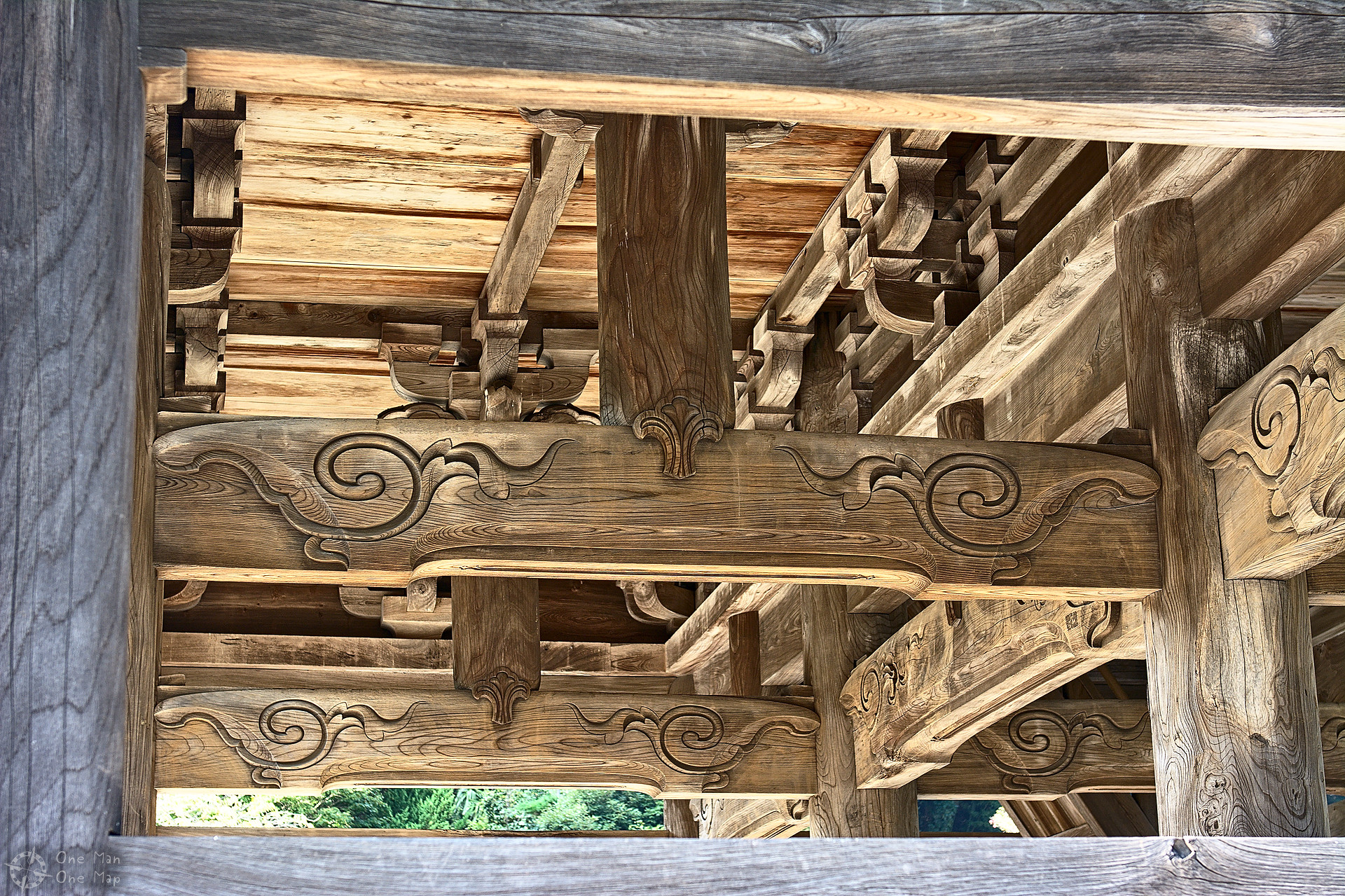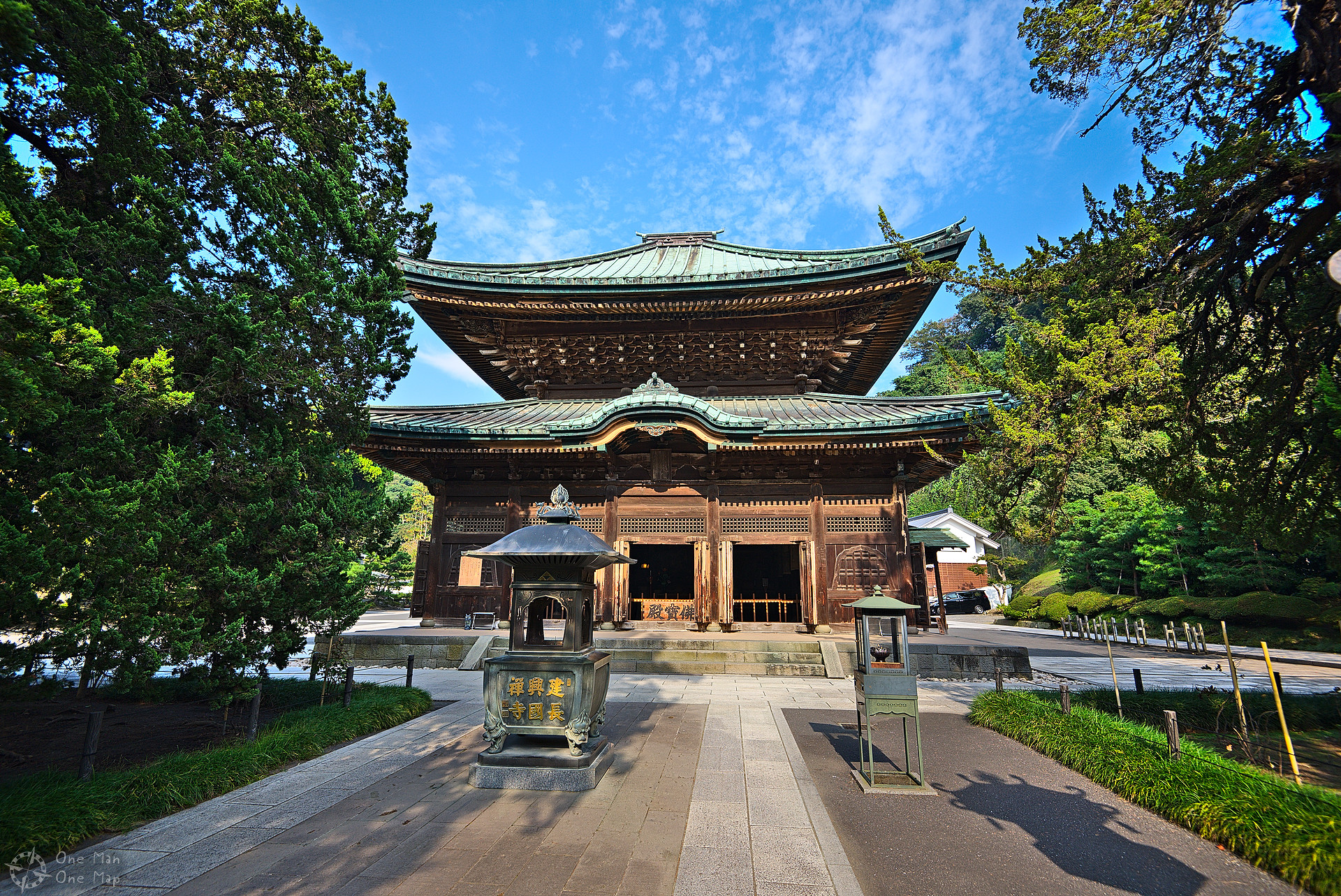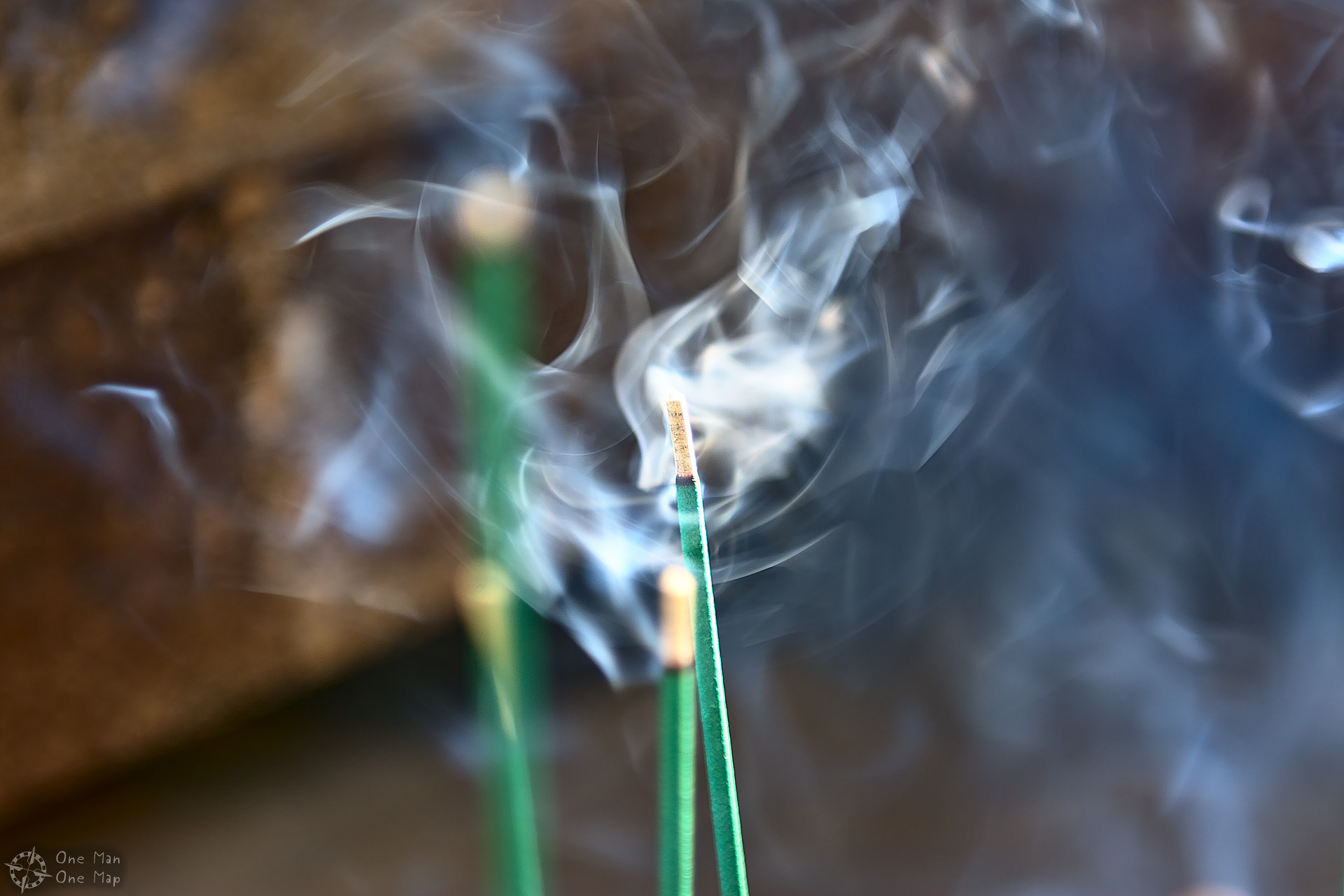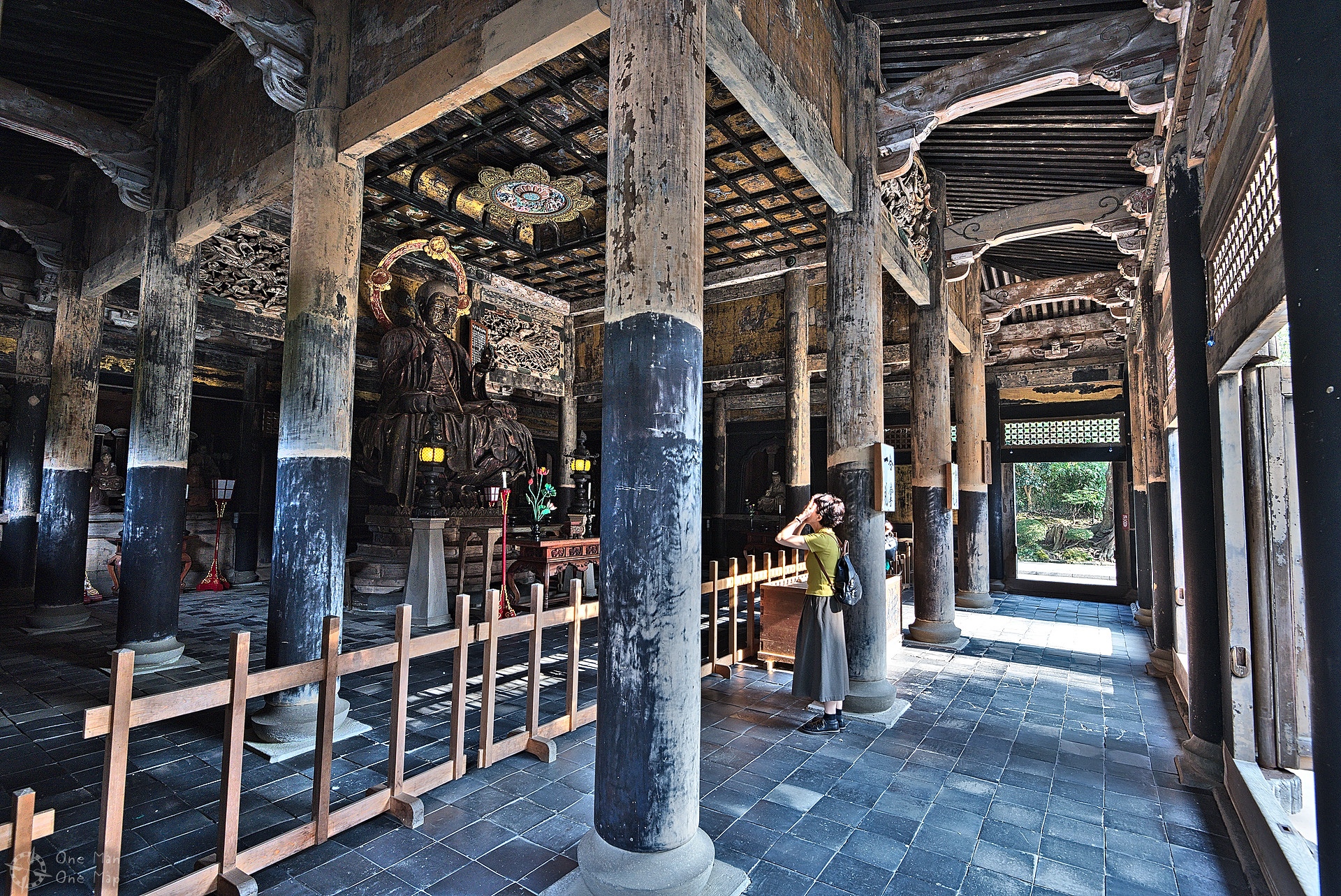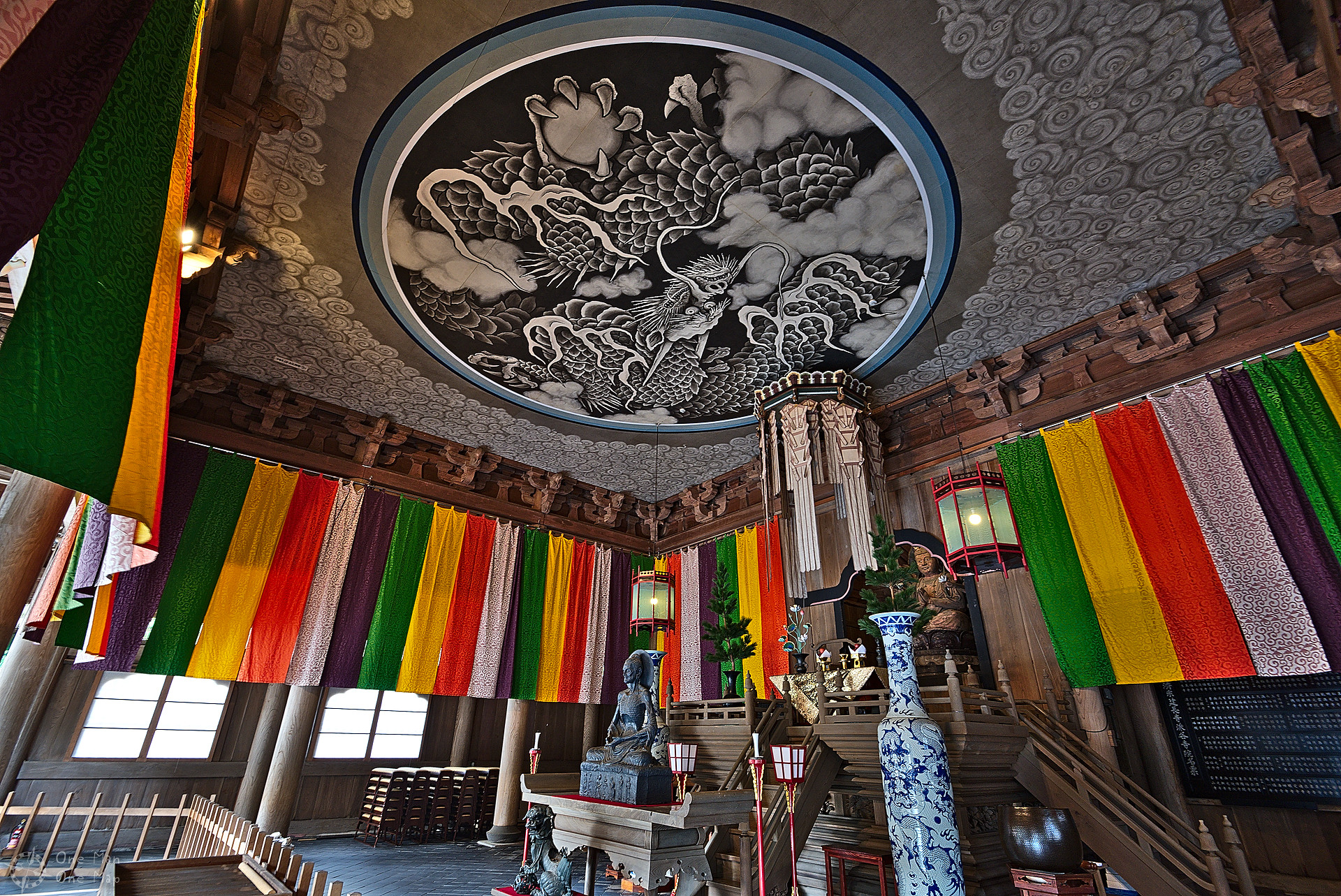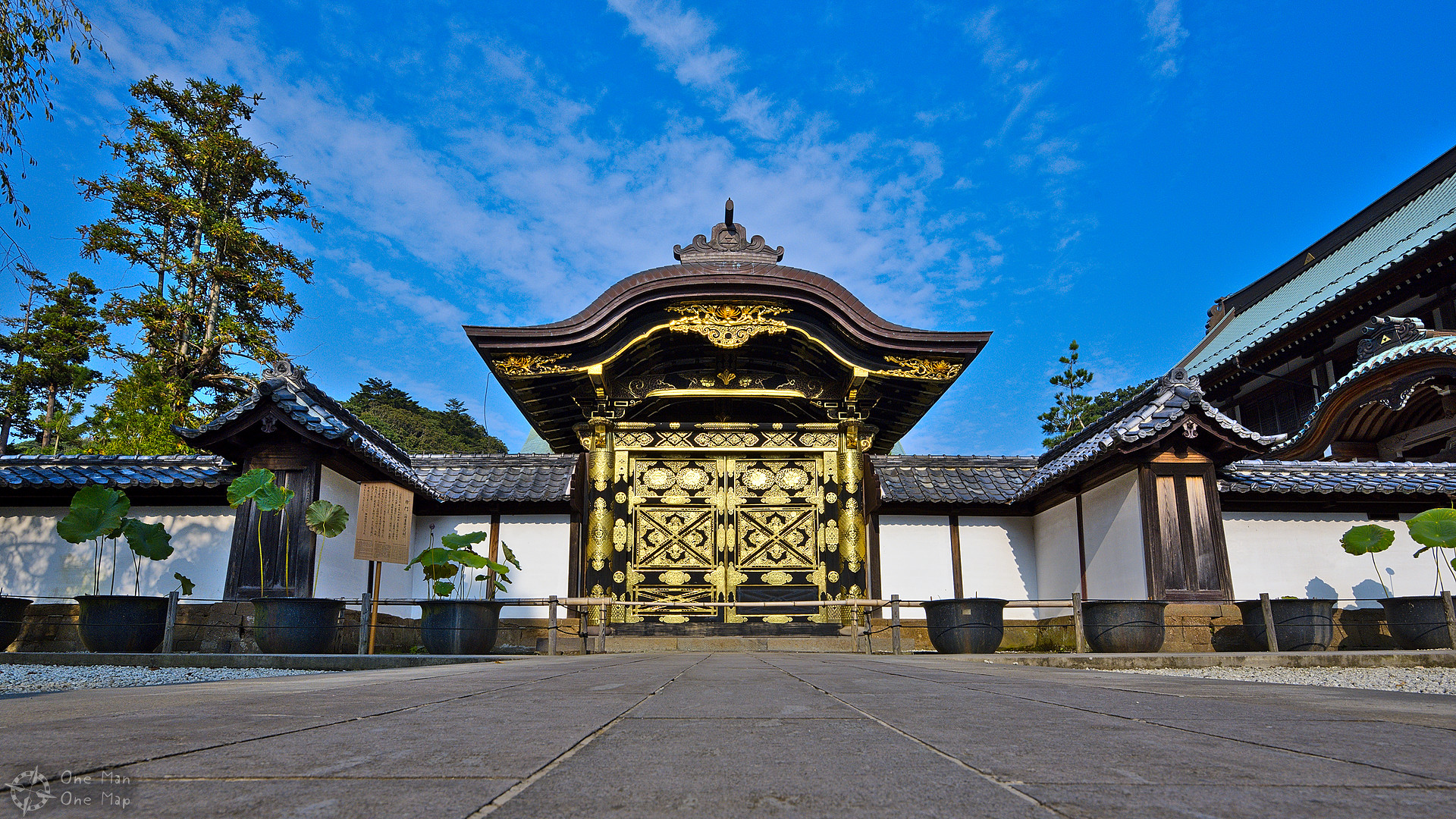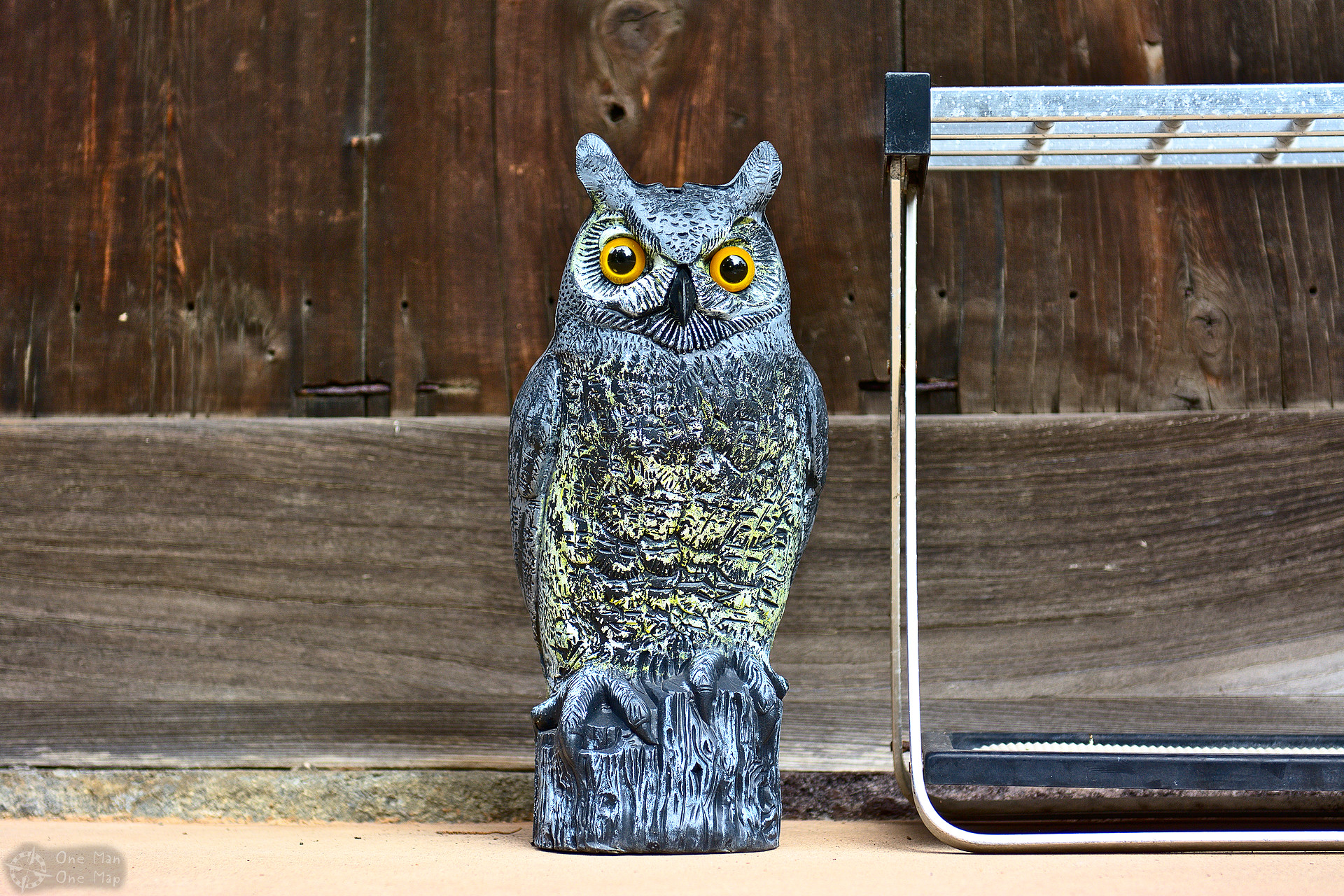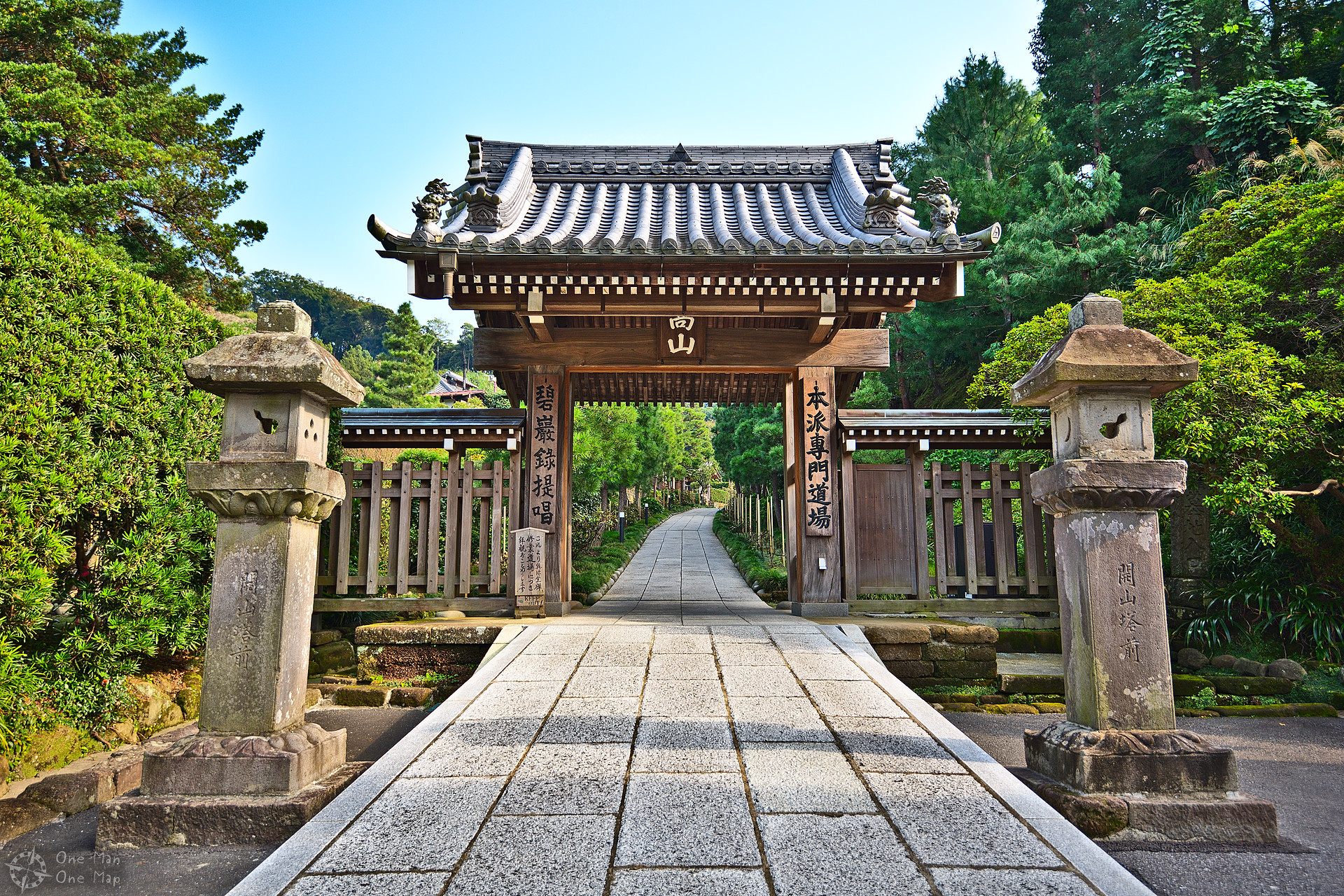Dieser Artikel ist auch auf Deutsch verfügbar. Click here to find out more about Japan!
My route within Japan can be found here.
My third day trip from Tokyo was to Kamakura (鎌倉市), a rather small city (by Japanese standards) with just about 170,000 inhabitants. It is located about 50 kilometers from Tokyo, at the coast not far from Enoshima. Again I used the Odakyu Electric Railway from Shinjuku, at a price of 670 yen (about 5 euros) each way.The ride took almost an hour, and by now I had gotten the hang of how to use the train system in Japan.
Arrived in Kamakura I went to the bike rental shop at the railway station and invested 1800 yen (about 13 euros) in a day rental of a bicycle with gear shift. There’s hardly a better way to move around here, and I would suggest to actually get the gear shift instead of saving a couple hundred yen – the streets can be steep!
From the 9th century on Kamakura was the most important city in the whole Kantō region (Tokyo didn’t play any role back then), and from 1185 to 1333 it even was the capital of Japan. Only when the Kamakura Shogunate was overthrown in 1333 the capital changed back to Kyōto. At that time Japan had a population of less than ten million.
So what looks like a small city nowadays must have been very impressive back then – especially because of the many, still well-preserved temples. Many of them are also located in the woods and on the surrounding hills, you could probably walk around for days or even weeks and would still not manage to see all of them 😯
Tsurugaoka Hachiman-gū (鶴岡八幡宮)
This complex is close to a thousand years of and the most important Shintō-Shrine in Kamakura. The rest of the city basically grew around it.
For the first 700 years, the temple was both a Buddhist and a Shinto sanctuary, resulting in the alignment of all paths and buildings according to the principles of Feng Shui: a mountain in the north, a river in the east, a large road in the west, and open space (the sea) in the south. The four gods Genbu (Black Turtle), Seiryu (Blue Dragon), Byakko (White Tiger) and Suzaku (Red Bird) protect the complex to the north, east, west and south. The willow trees symbolize the Blue Dragon, the trumpet trees the White Tiger. Easy, right? 🙂
As always it was amazing to see how well the traditional Japanese architecture fit into nature. In Europe most churches are made of of stone or concrete, are located in urban stone/concrete deserts, there are pigeon nets in front of all openings, paths are paved, and the grass (if there is any) is carelessly trimmed with the lawnmower.
Century-old wooden buildings and artificial lakes blend in with the trees and shrubs, stairs adapt to the geometry of the terrain, and if something is trimmed, then according to well-defined rules. I have enjoyed more tranquility and seen more animals in the average Japanese temple than in most European parks, not to mention European churches or monasteries.
But of course it wouldn’t be Japan if there wasn’t a bit of order 😉 In this photo you can see keyed lockers for… exactly, umbrellas!
If you move around a larger Shinto shrine you will inevitably come across huge shelves with large barrels. These are Kazaridaru (飾り樽), barrels for Sake (酒, rice wine). Wine and religion have always belonged together in Japan. Sake is traditionally offered to the gods and served in shrines during religious festivals. Only four shrines in all of Japan are allowed to make their own Sake, which is why the wine is usually donated by the local breweries for the festivitie. The shrine thanks them by displaying the donated barrels.
These barrels can also be bought for private use, by the way, which is especially popular for New Year’s Eve, weddings or the inauguration of buildings. If you don’t feel like drinking the whole 72 liters, you can also have them insert a fake bottom and reduce the volume a bit 😉
Hōkai-ji (法界寺)
This unremarkable, almost overgrown Buddhist temple complex is connected to the history of Japan like only a few other places are. When the Kamakura Shogunate was overthrown by a hostile attack on July 4, 1333, 870 members of the ruling Hōjō clan committed suicide to escape defeat – men, women, and children. In one swoop, a whole family clan who had ruled Japan for 135 years was wiped out. The souls of the dead were later enshrined here.
Listen to places: Press Play to immerse your ears in a buddhist ceremony! The combination of nature sounds, the drums and the bell had something magic 🙂
Kōtoku-in (高徳院)
This temple is located in the southwest of the city and thus “far off the beaten track”. The only attraction is the big Buddha, which you can see from the inside for an entrance fee. That sounds more spectacular than it is – next time I would skip the whole place.
Hōkoku-ji (報国寺)
One of the most famous temples in Kamakura is the “bamboo temple” Hōkoku-ji, about two and a half kilometers from the train station. Around 2,000 bamboo plants grow on the site, and if you add 500 yen (about 3.80 euros) to the 200 yen (about 1.50 euros) entrance fee can take part in the popular tea ceremony at the tea house.
Also very popular with tourists: rent a traditional kimono and feel like you’re in the 13th century for a day. The two girls had agreed to pose for a photo and I sent them the pictures via email later. The bare minimum you should do as a photographer when taking such pictures, in my opinion!
Kenchō-ji (建長寺)
If you want to visit this Zen temple, you have to walk or bike up a hill and go through a road tunnel, but it’s worth it! Well, unless you are playing Pokémon GO, then you have to stay outside anyway…
Almost everything in Kenchō-ji is a “national treasure” or an “important cultural asset of Japan”. The complex was a “Temple of first rank” in the temple ranking system of the 14th century, rivaled only by the Nanzen-ji (南禅寺) in Kyōto. Up until the big fires in the 14th and 15th century there were 49 (!) sub-temples on the site. Even today there are still about 500 branch temples all over the rest of the country.
The Sanmon (三門) is the main gate of every Zen temple. At Kenchō-ji it is particularly large and impressive.
The Butsuden (仏 殿, Hall of the Buddha) is the main hall of the complex. The entire building was moved piece by piece from the Zōjō-ji temple in Tokyo in 1647.
All public ceremonies are held in the Hattō. The building is the largest wooden Buddhist structure in Eastern Japan, but it is more famous for the ceiling painting of a dragon added in 2003 than for its size. Painter Koizumi Junsaku climbed the ladder once more at the age of 79 to make this piece of art.
The golden Karamon (唐門), visible from afar, was moved to this location together with the Butsuden in 1647.
Tired and worn out from all the pedalling I made my way back to the train station. But before I went back to Tokyo, I had to visit another Animal Cafe 😉
This post was written by Simon for One Man, One Map. The original can be found here. All rights reserved.

